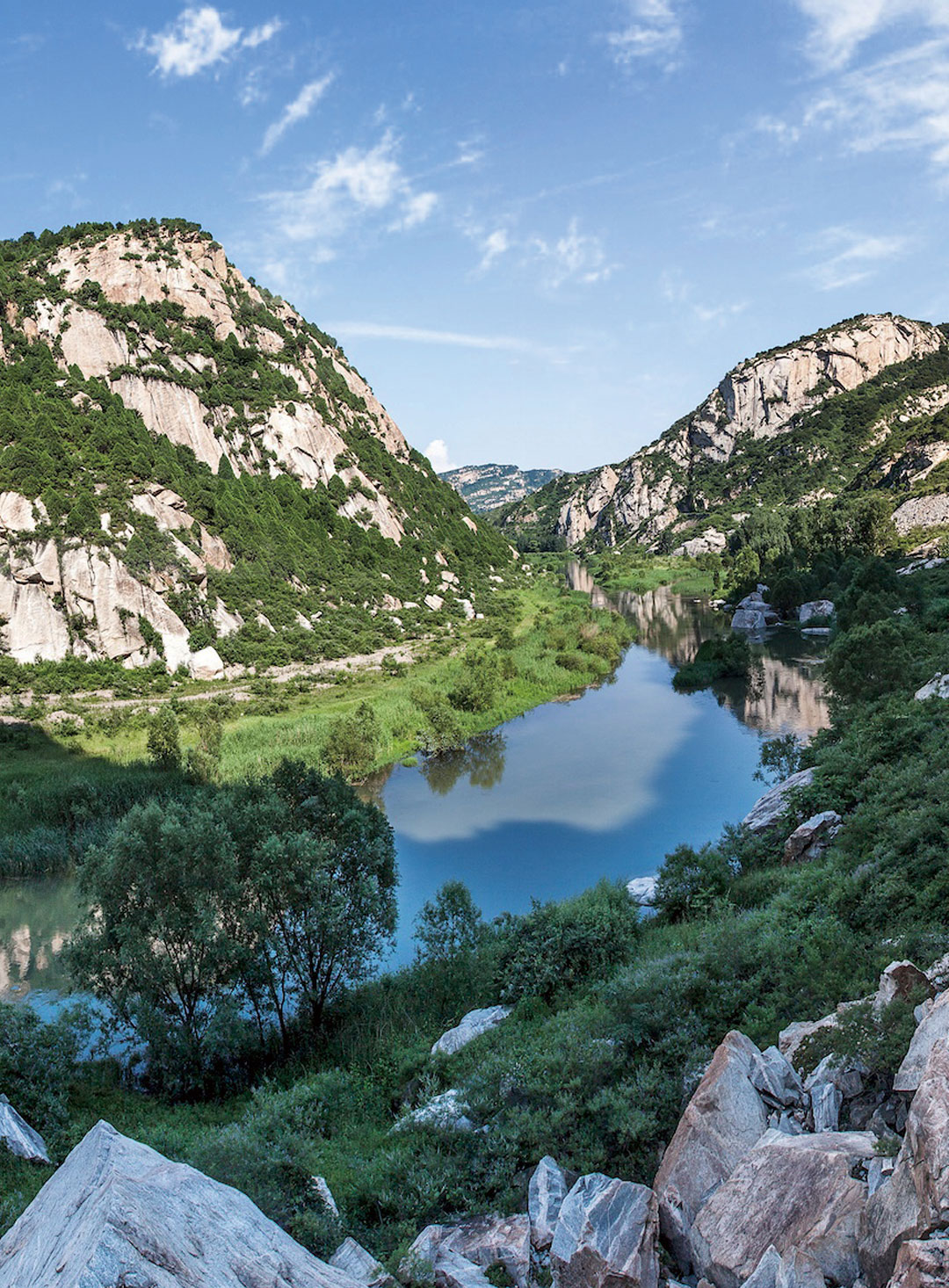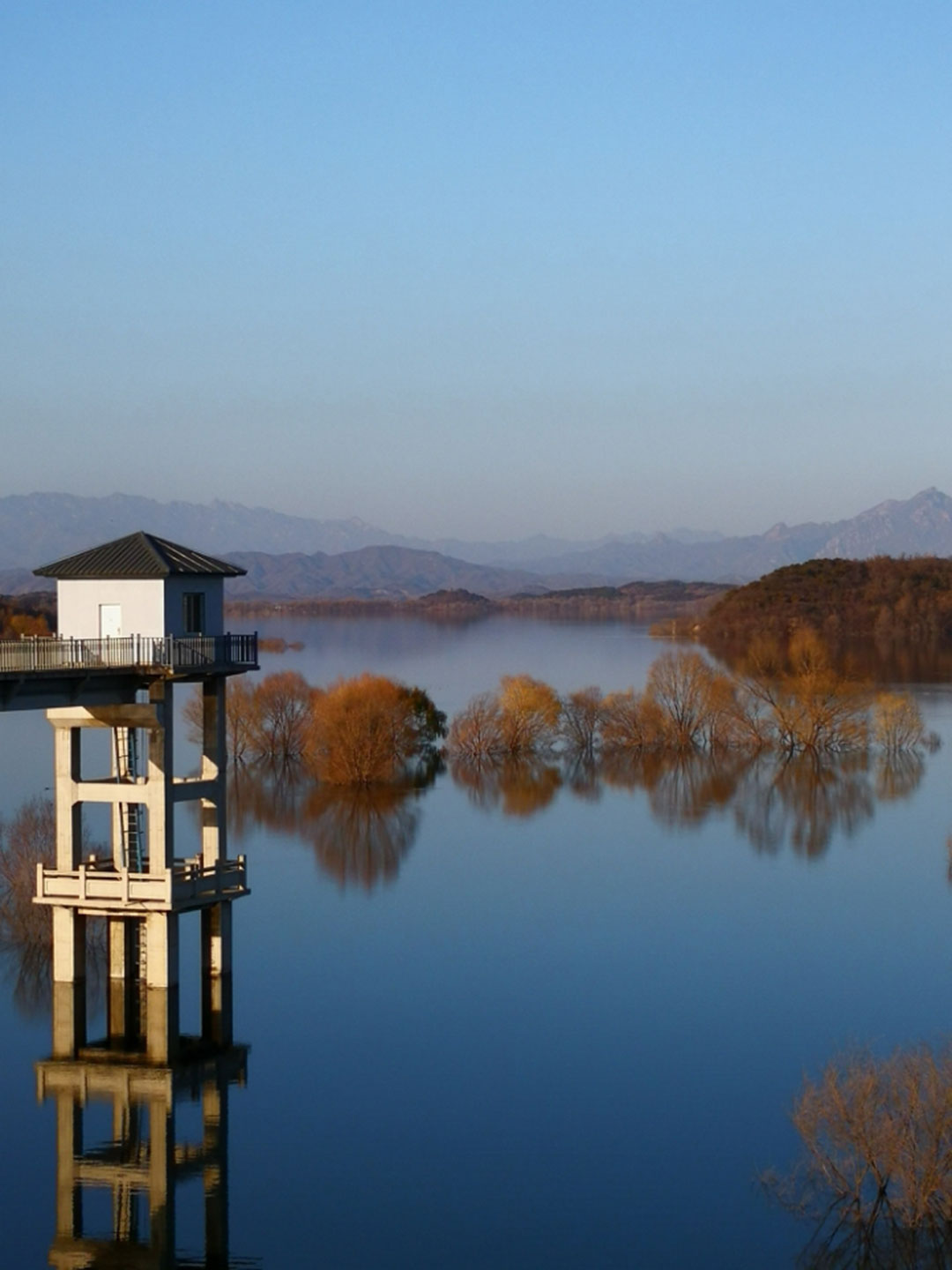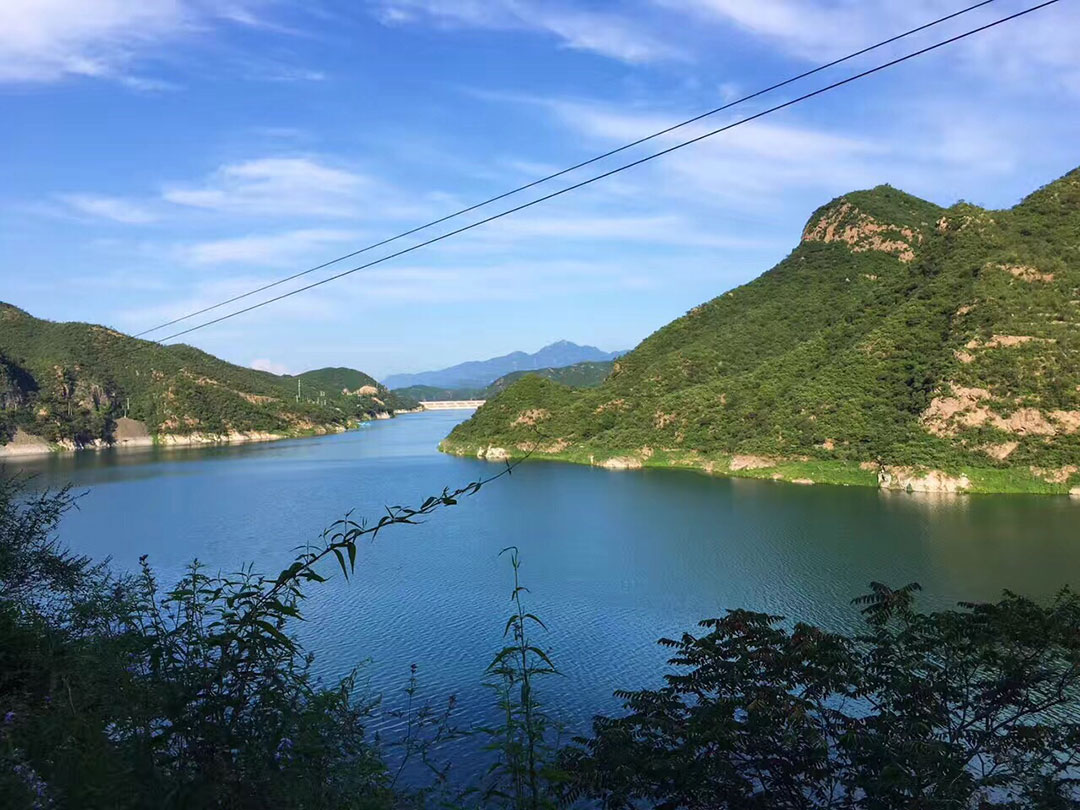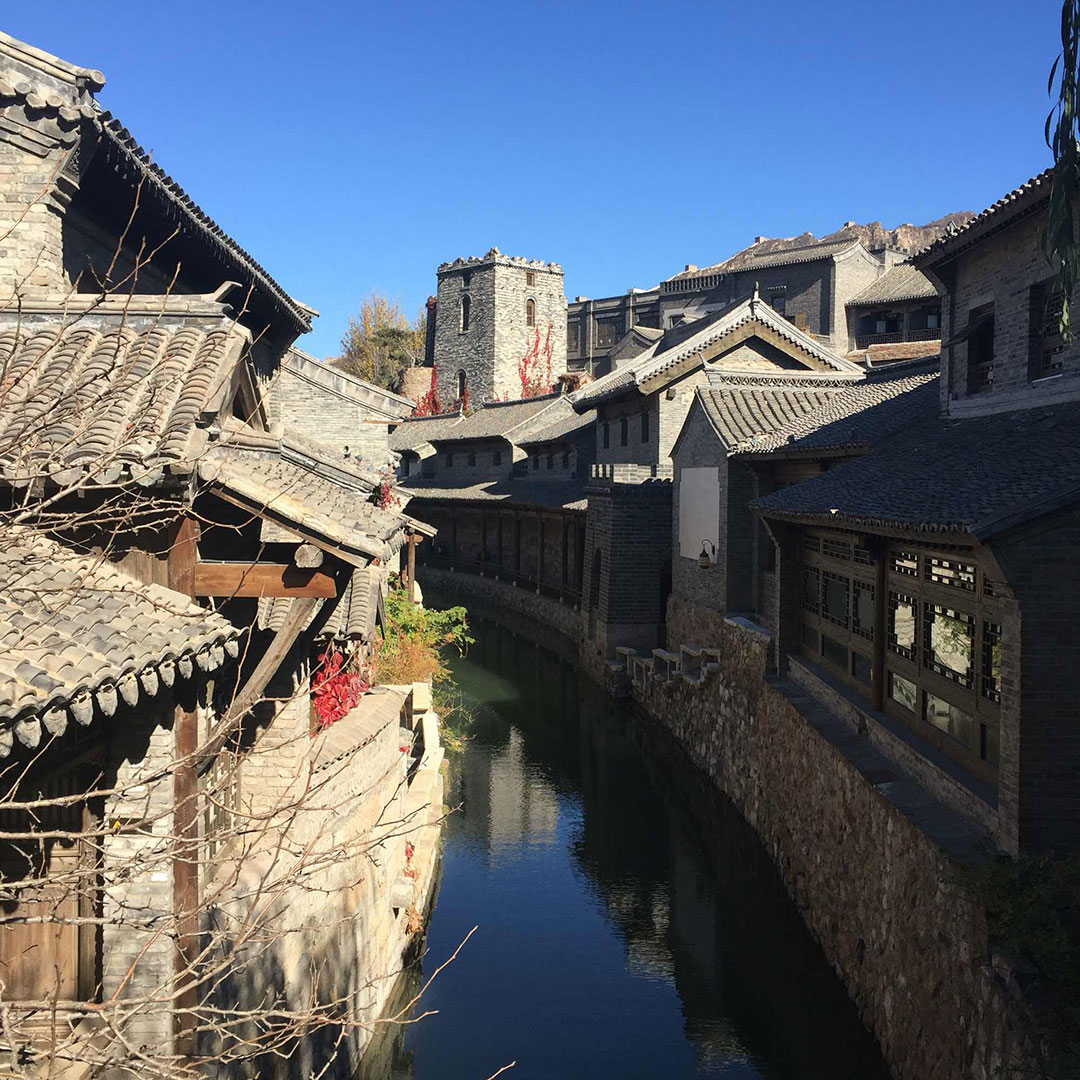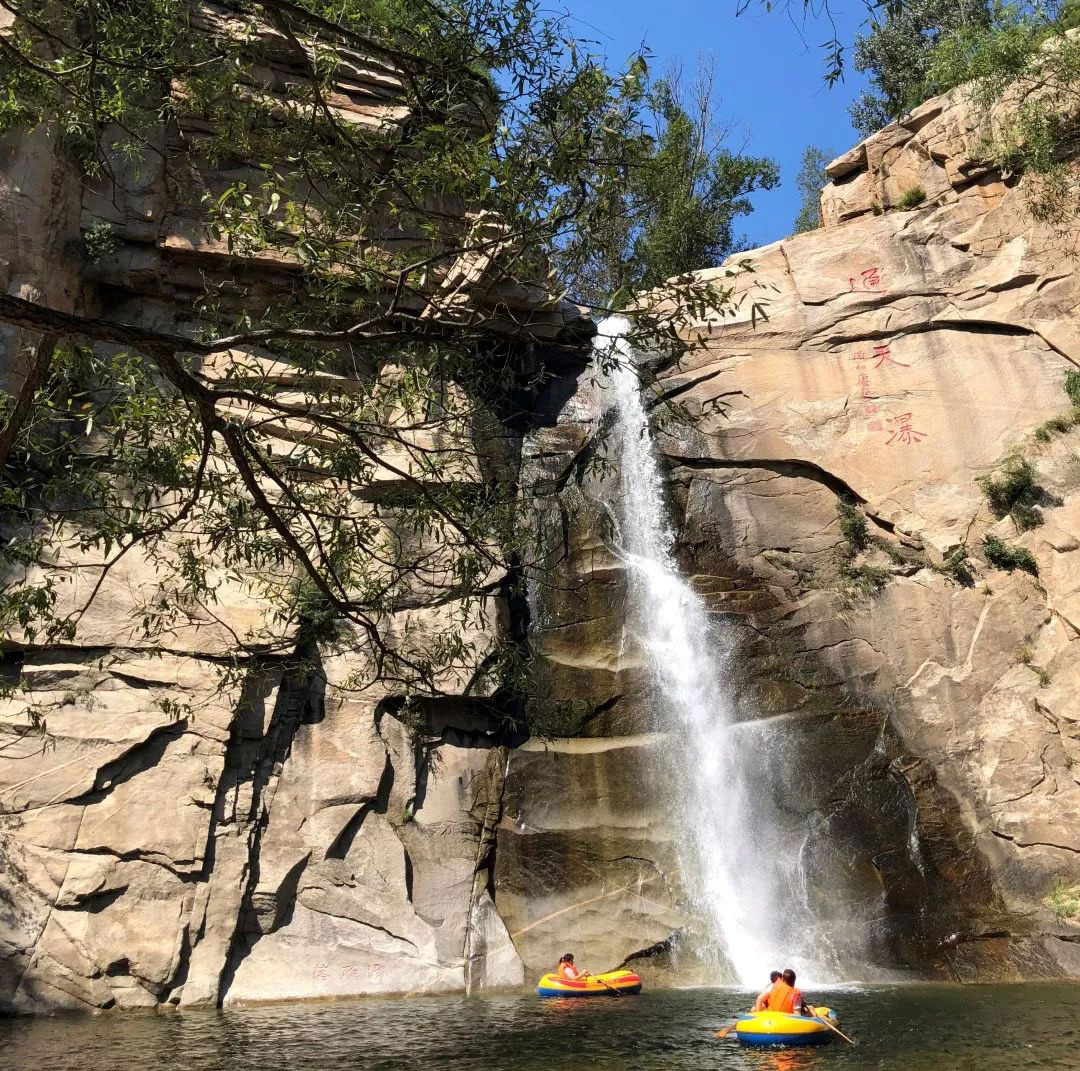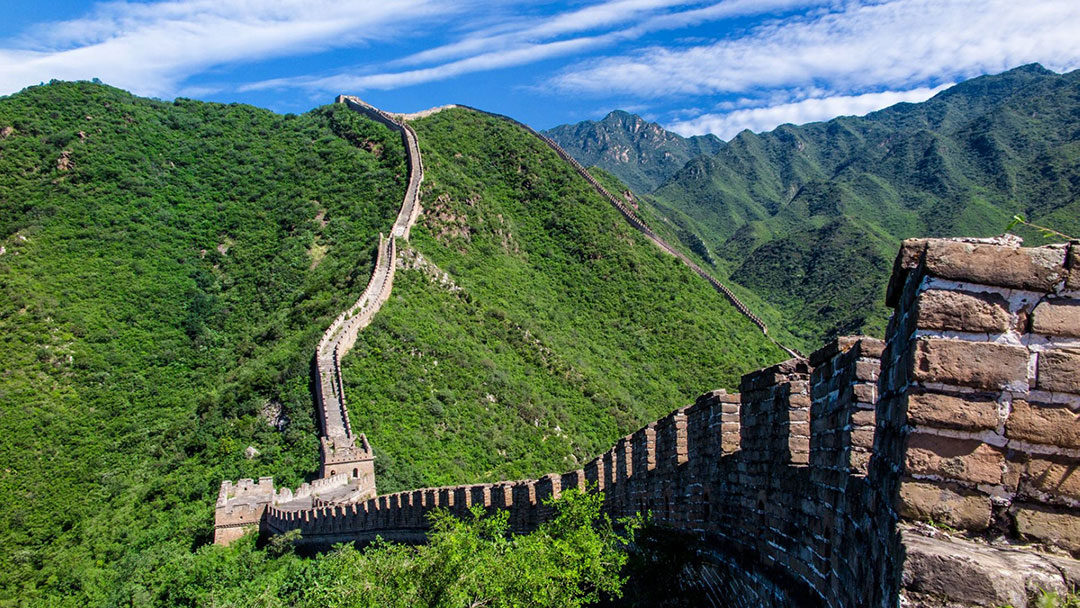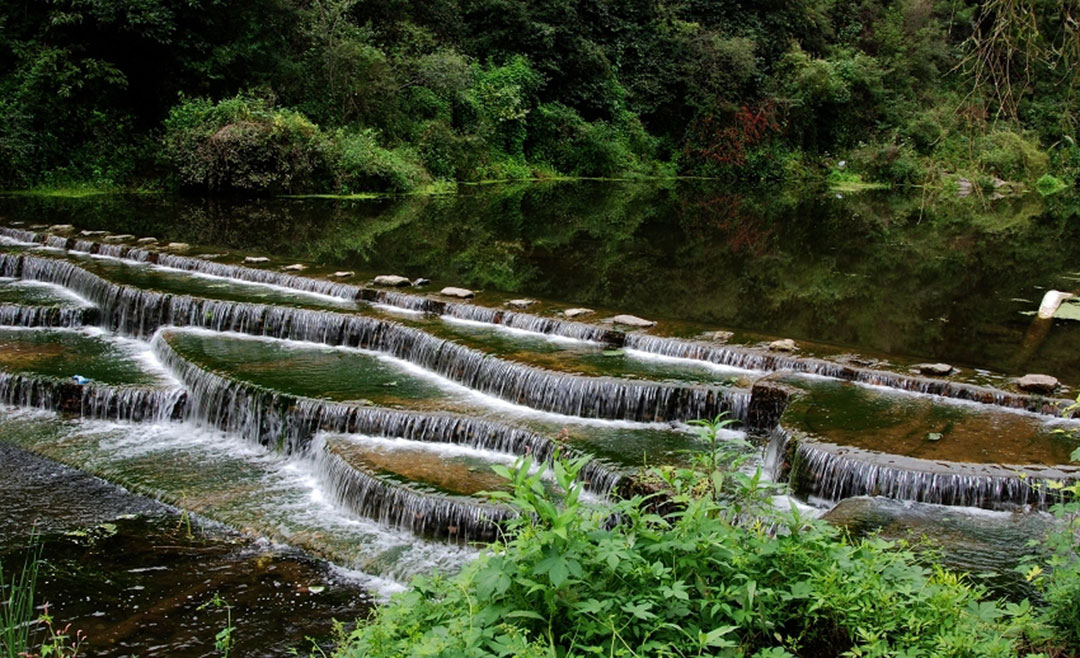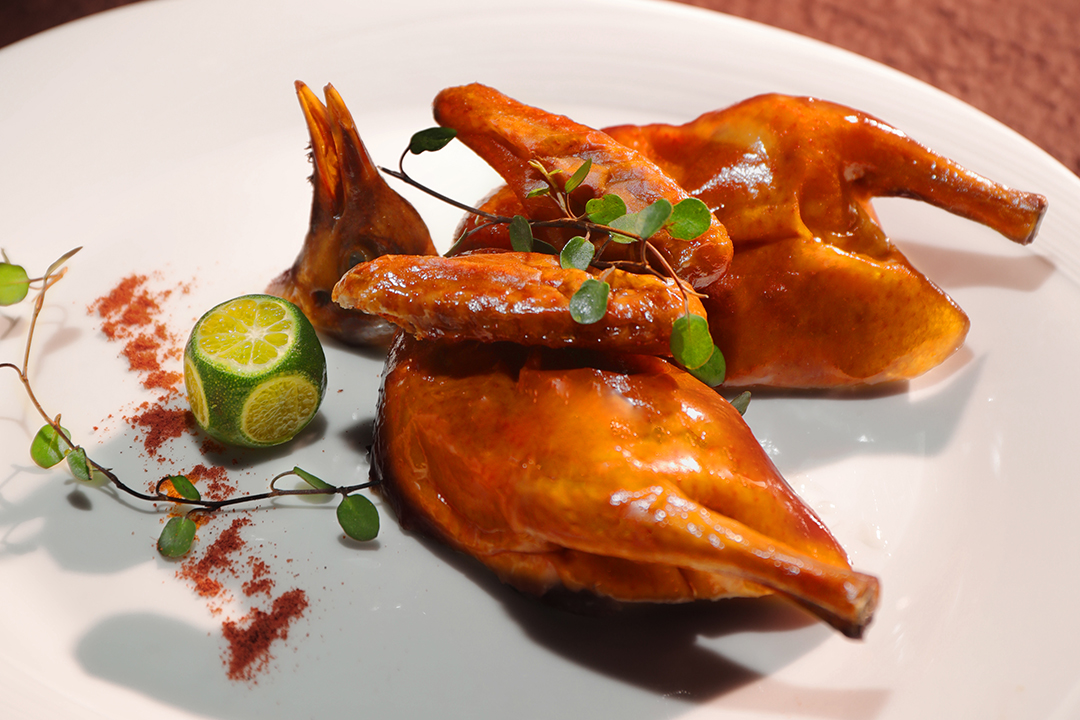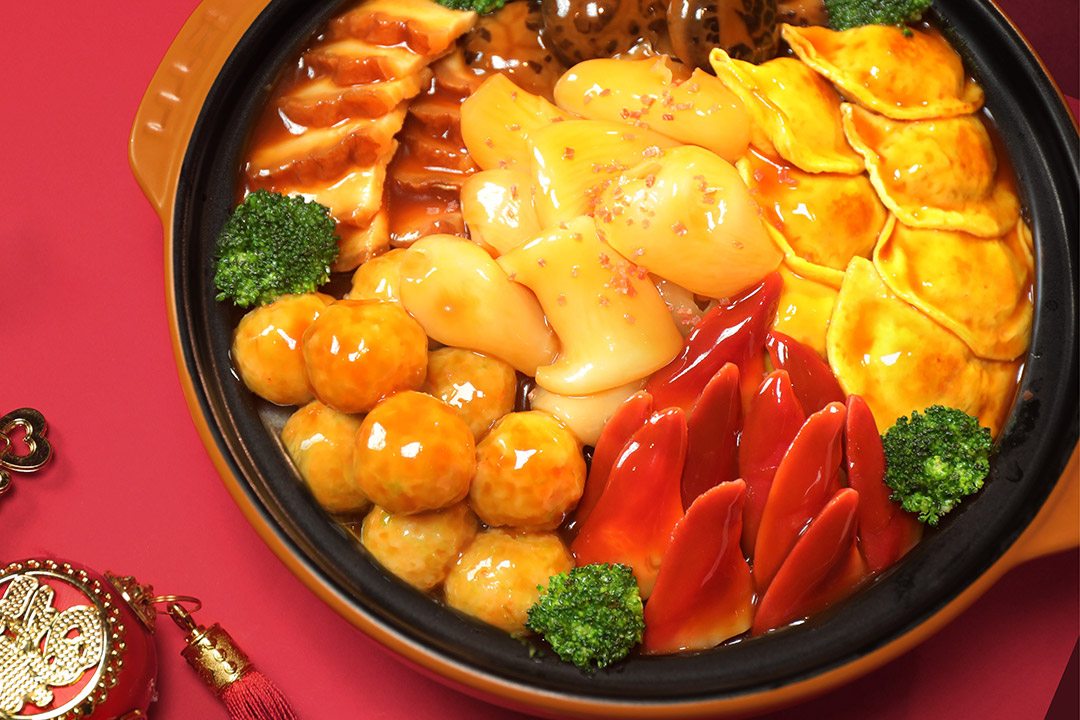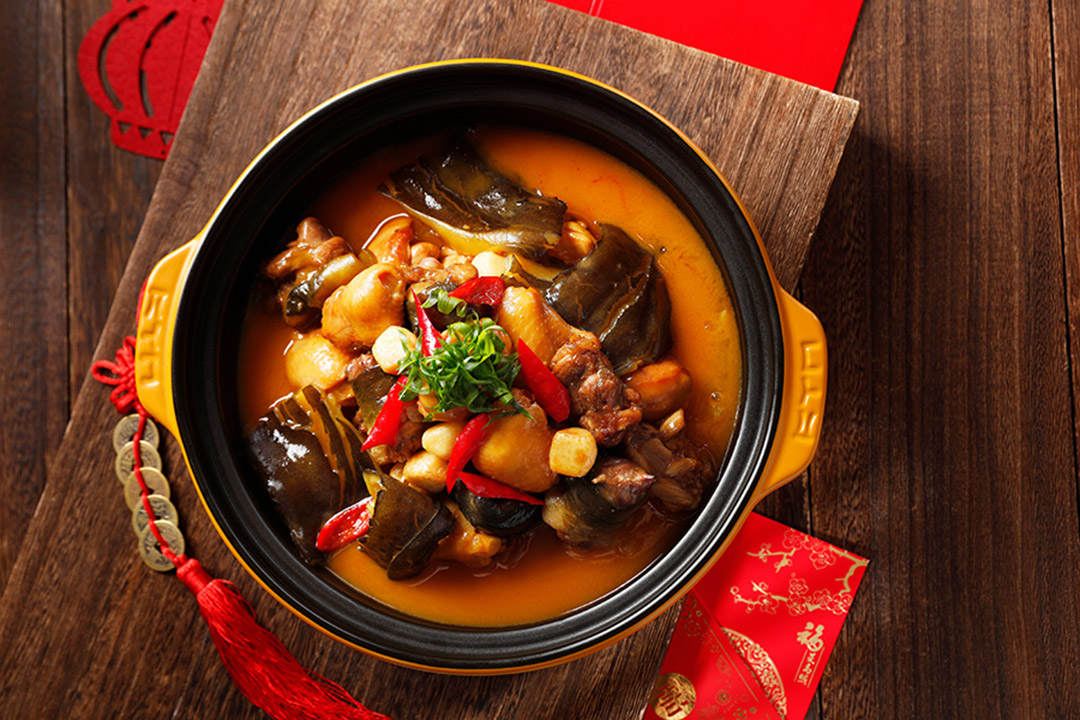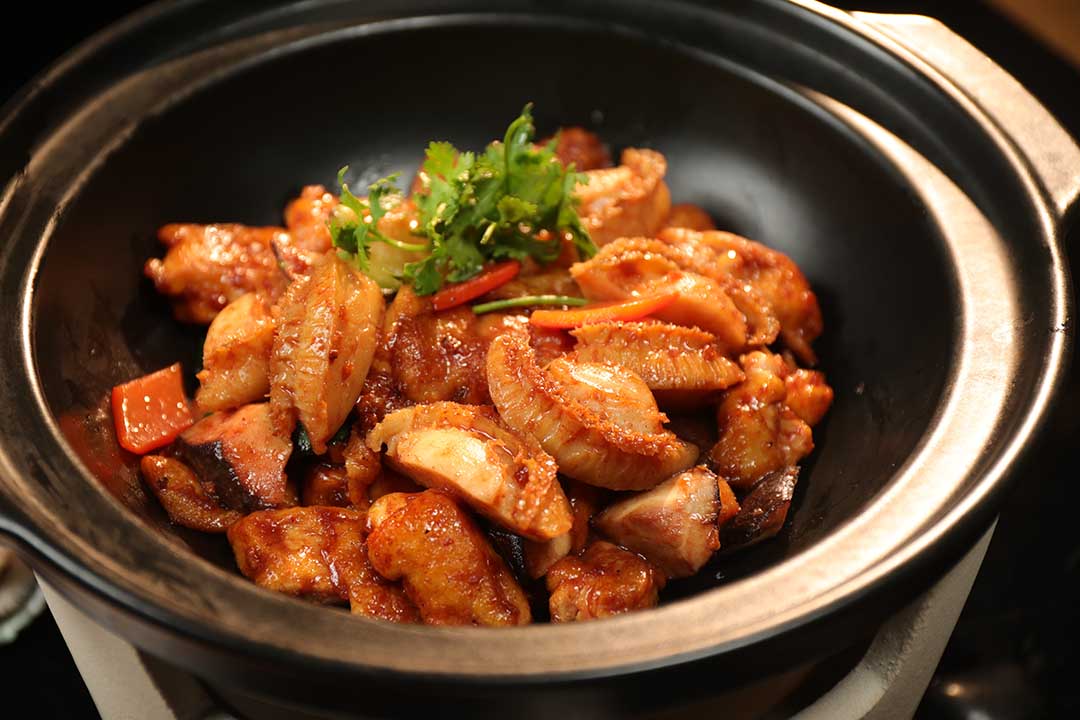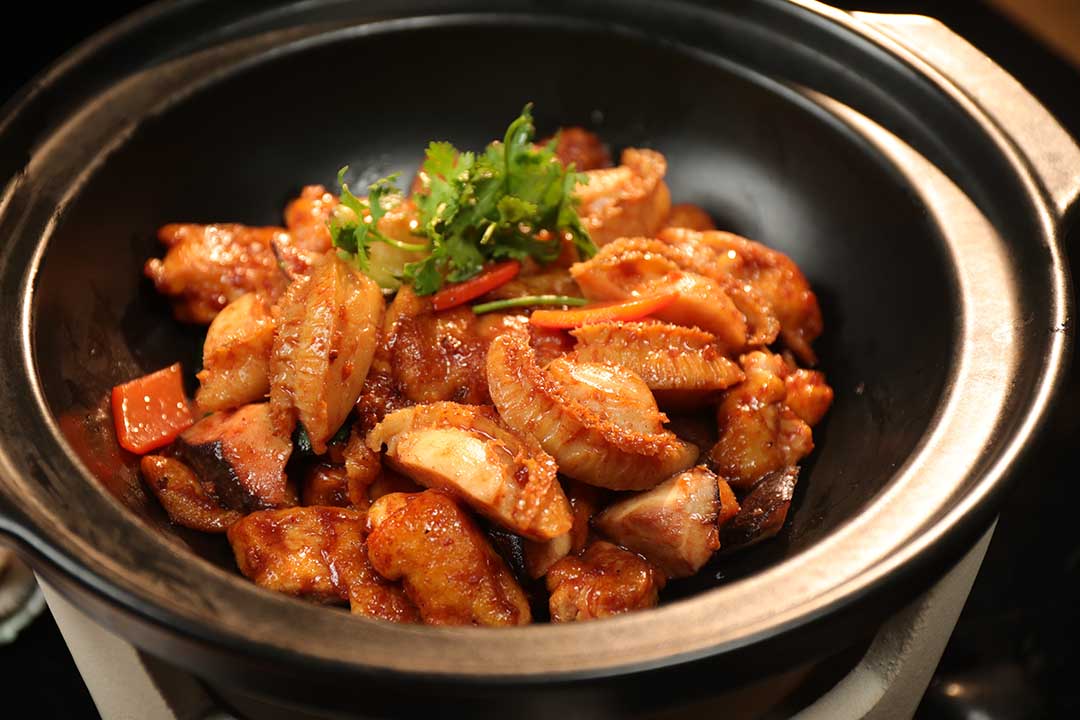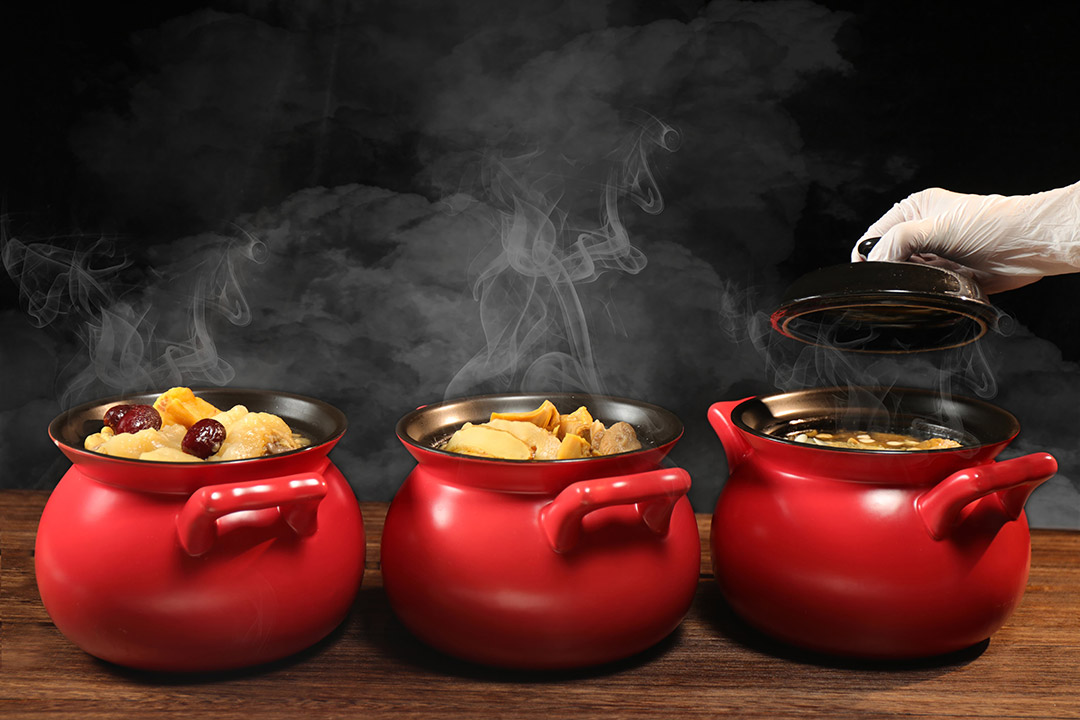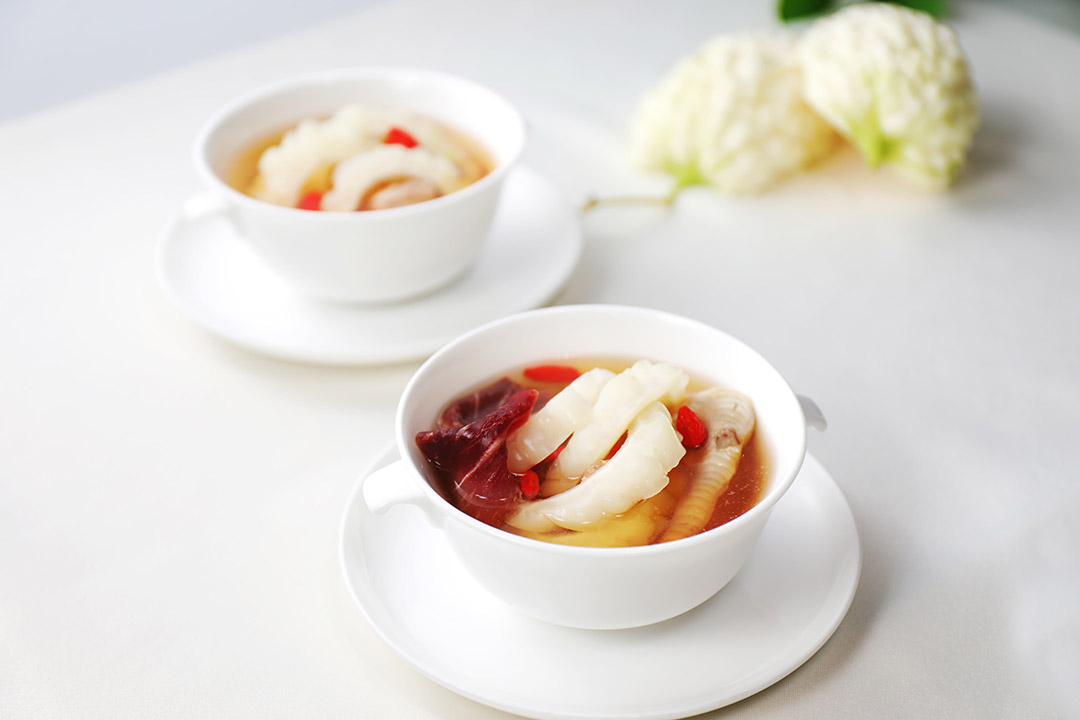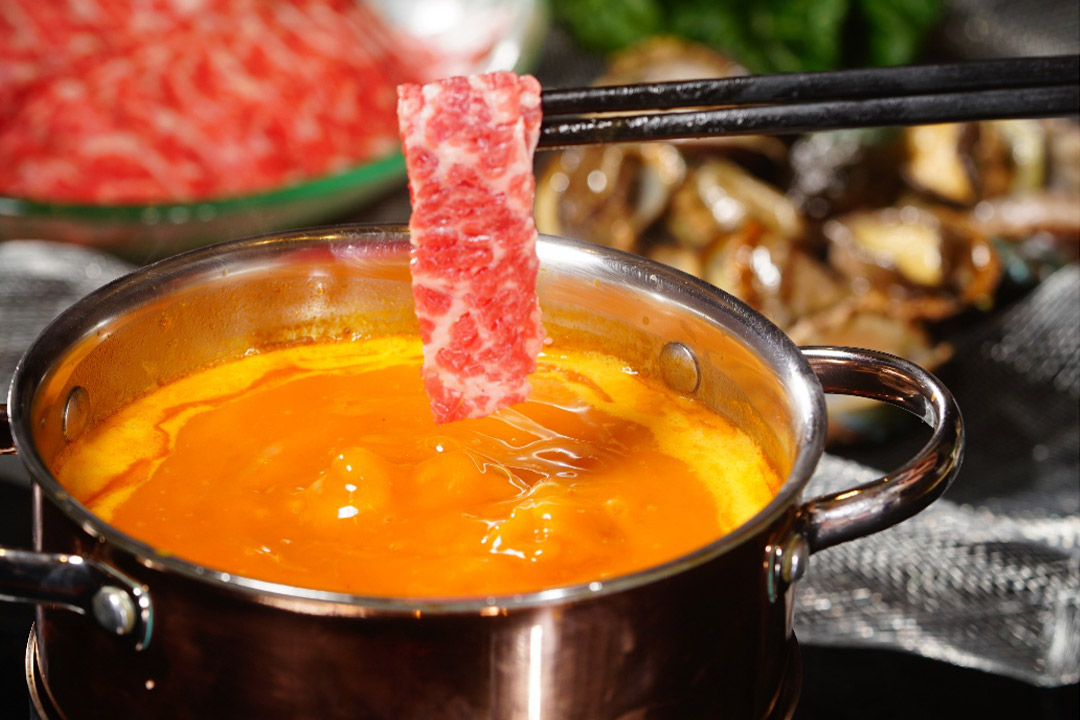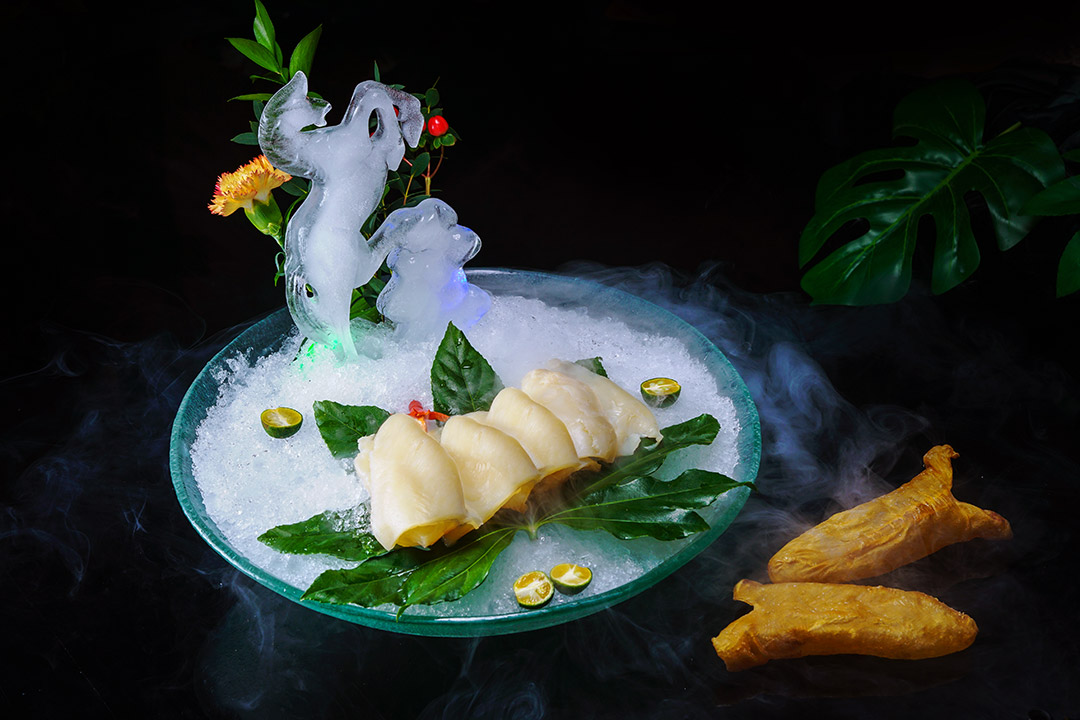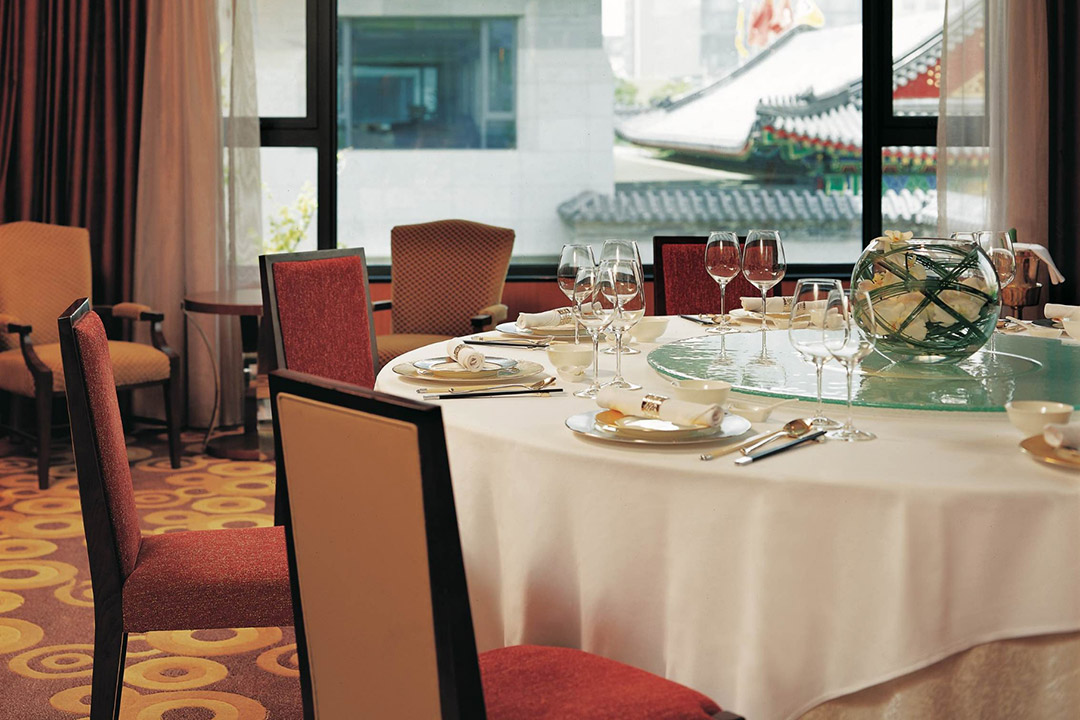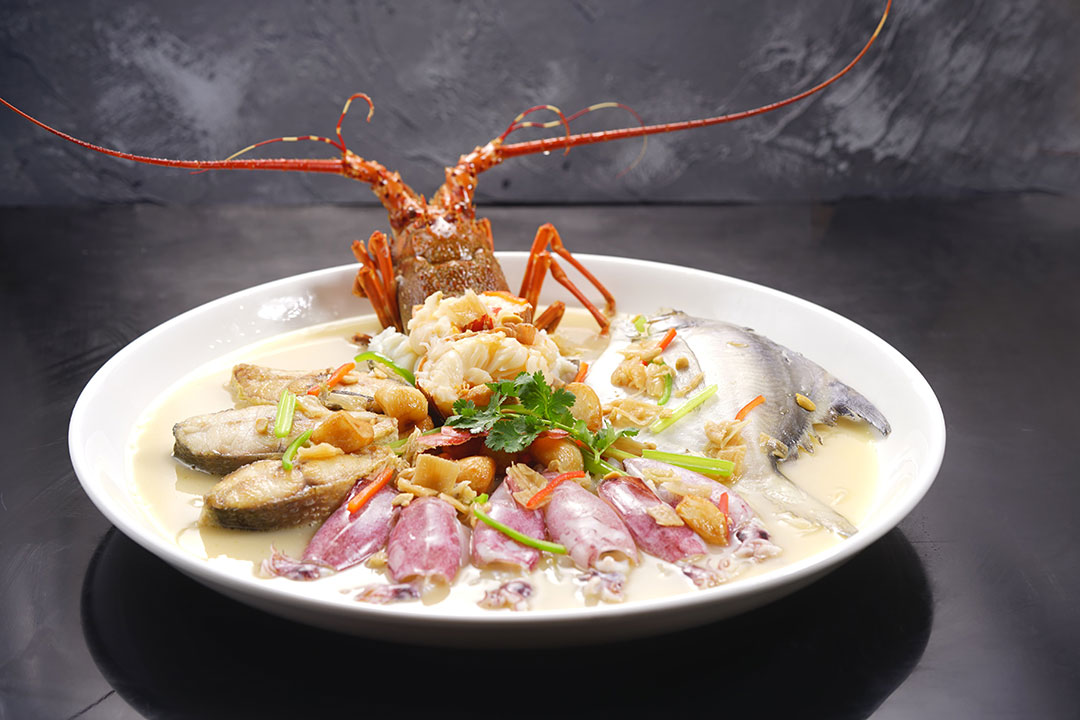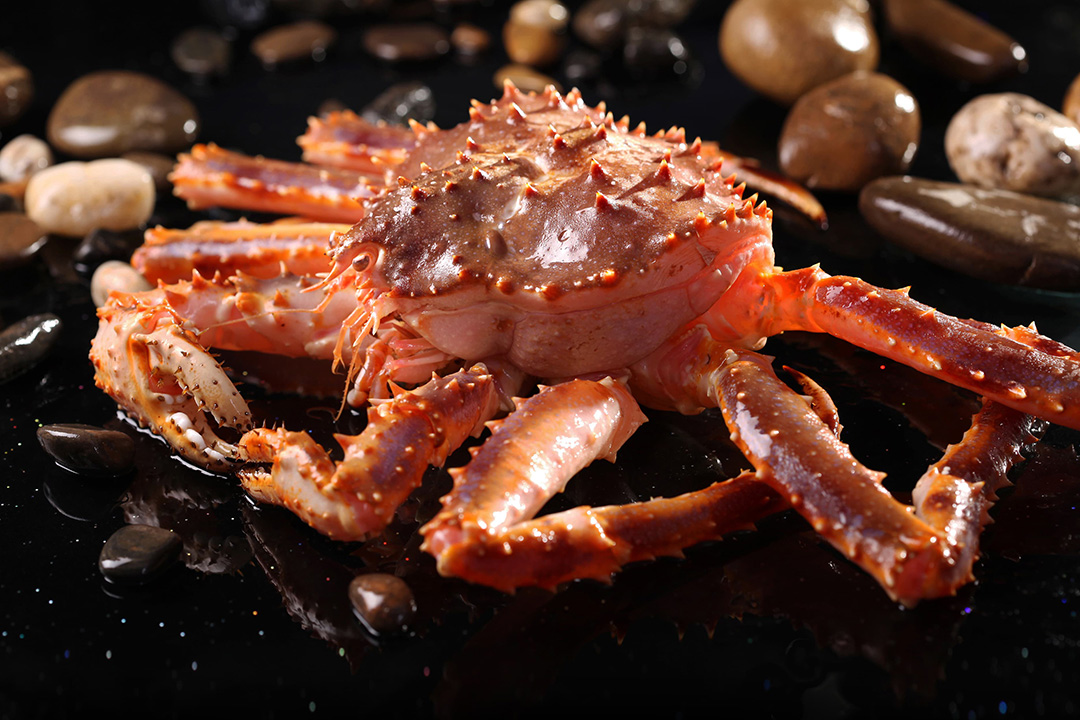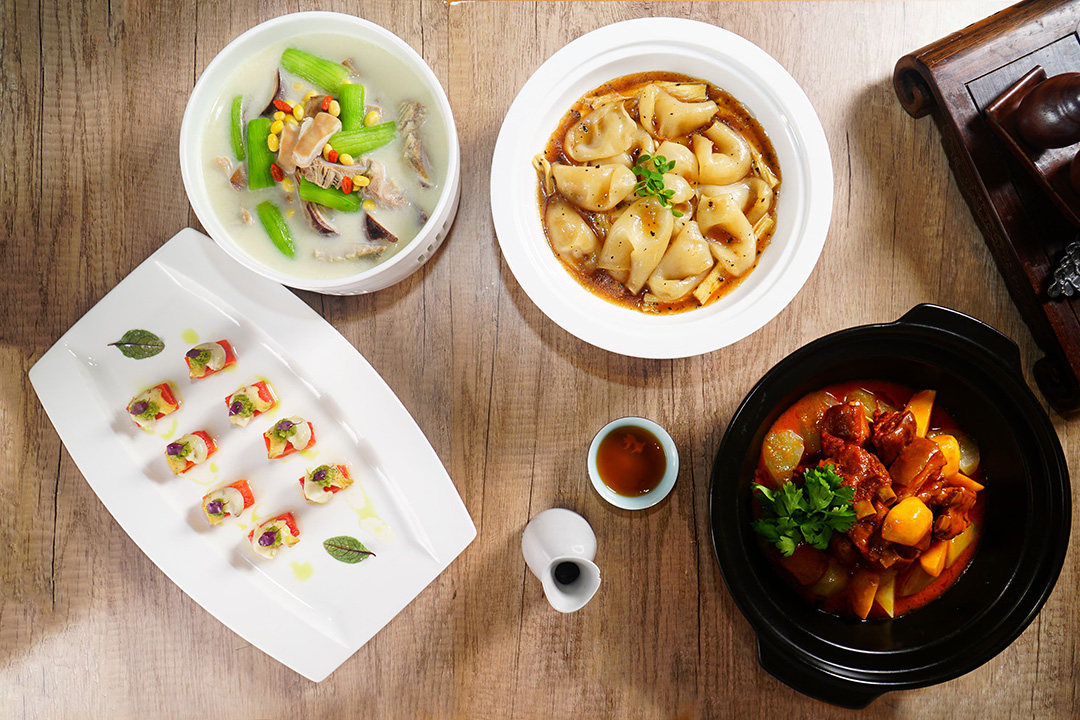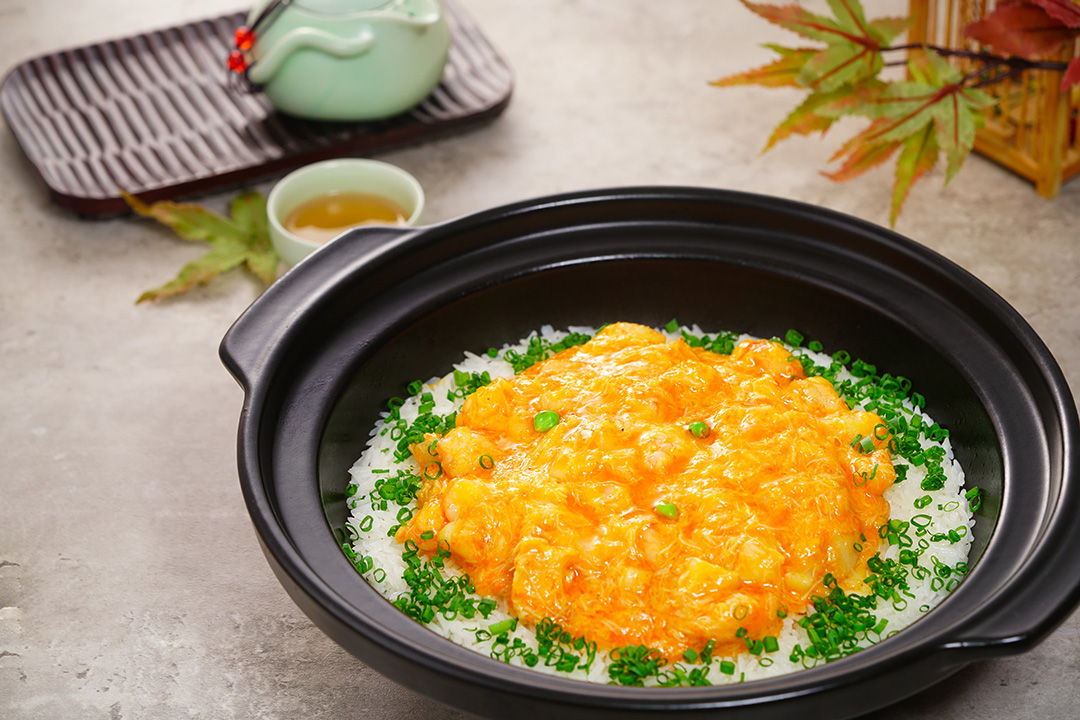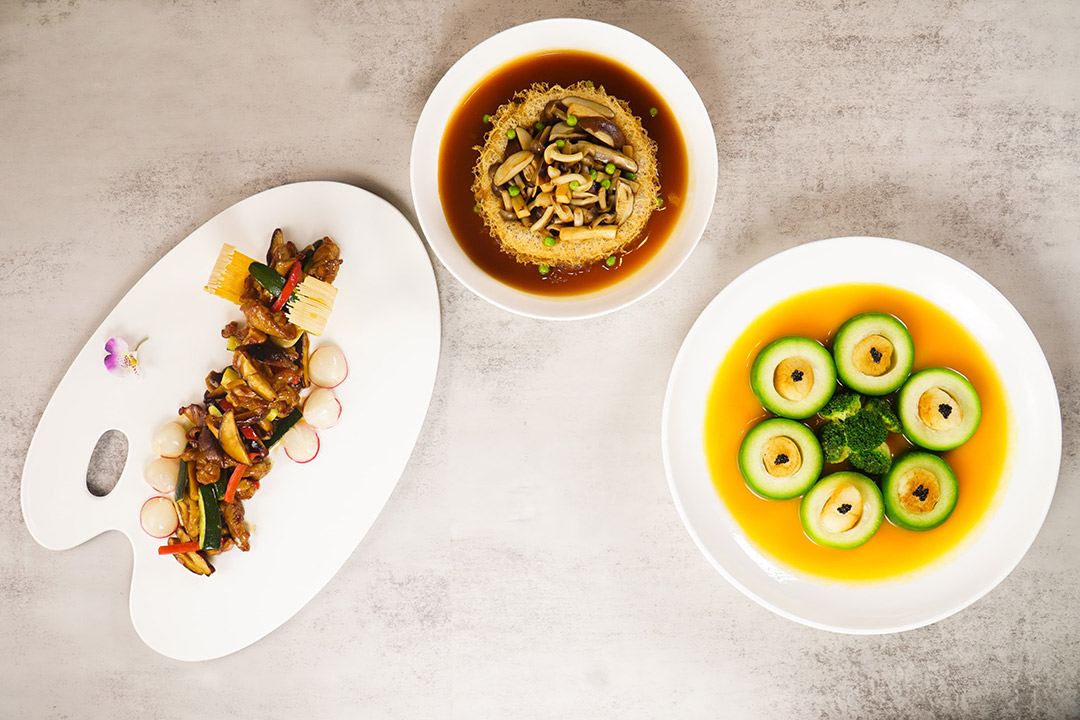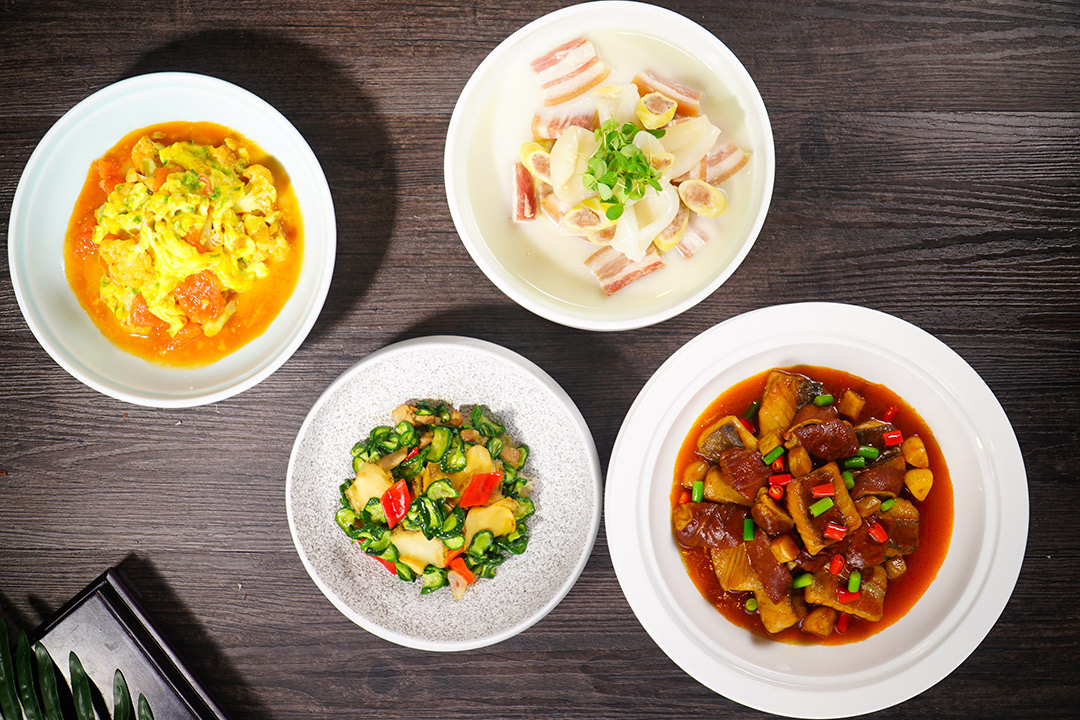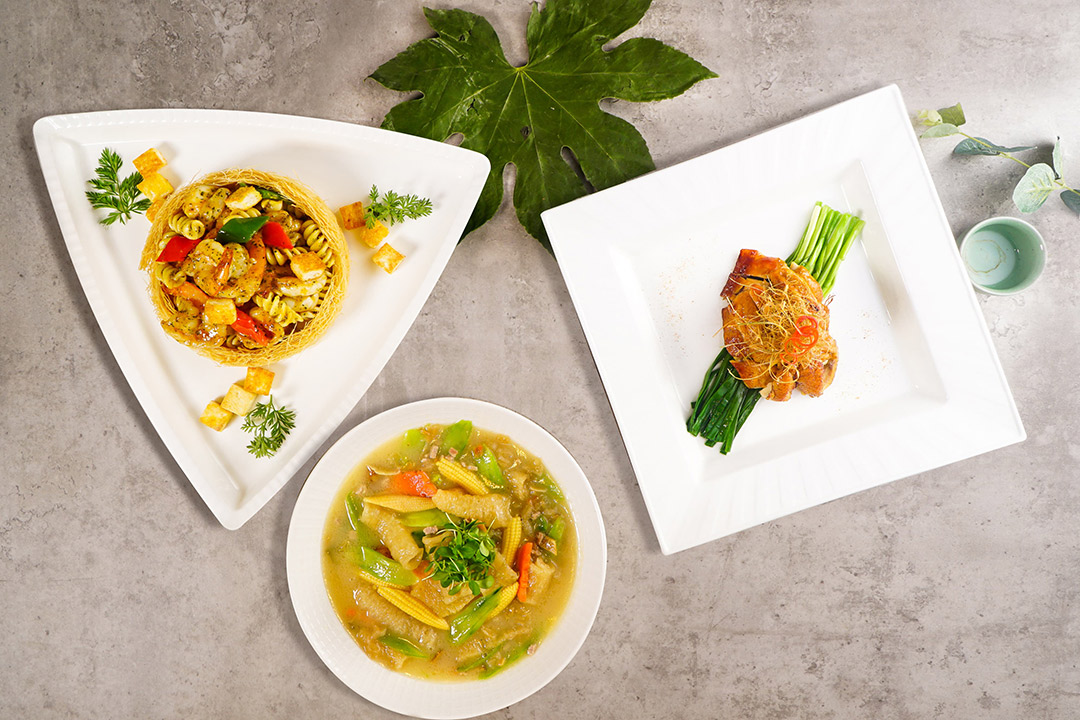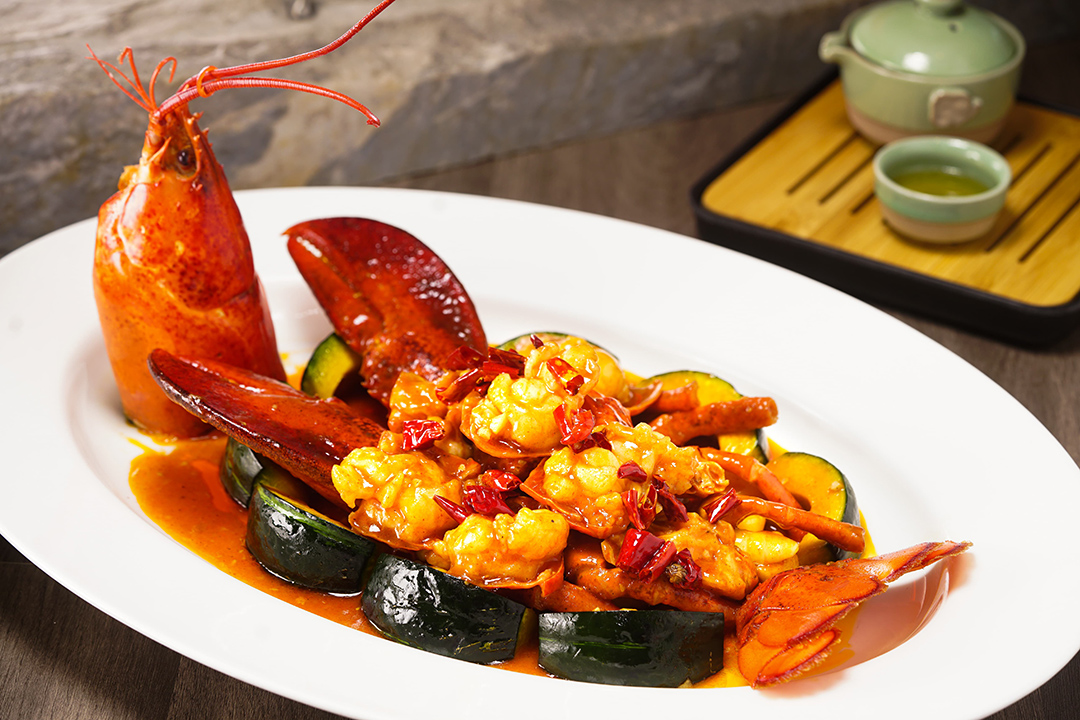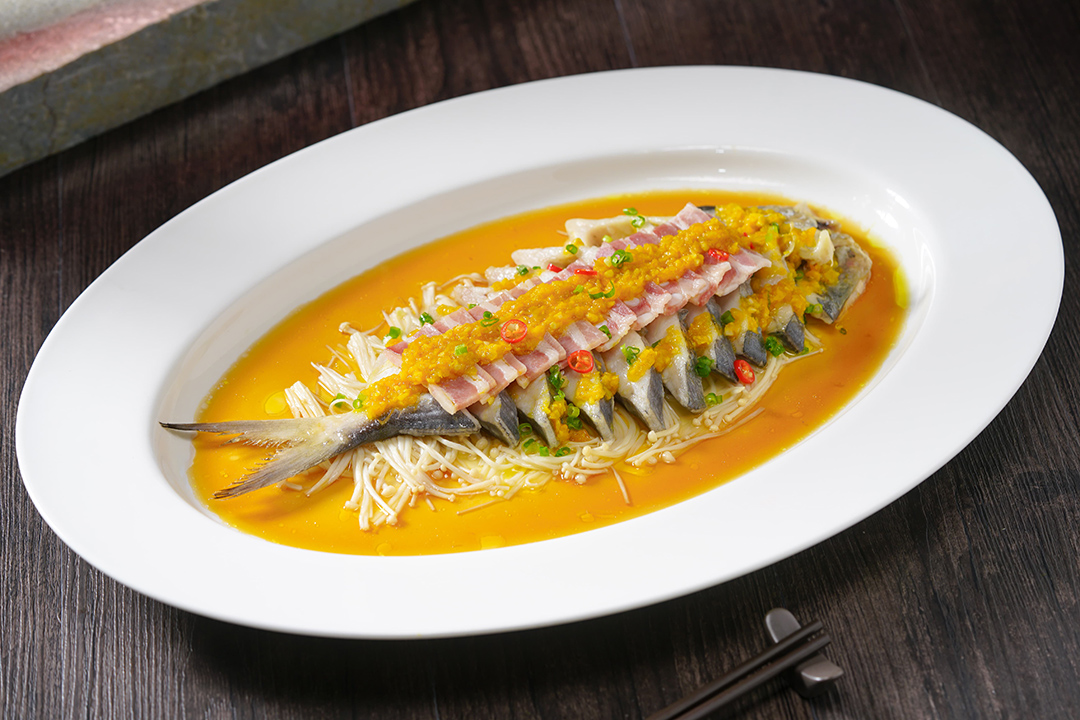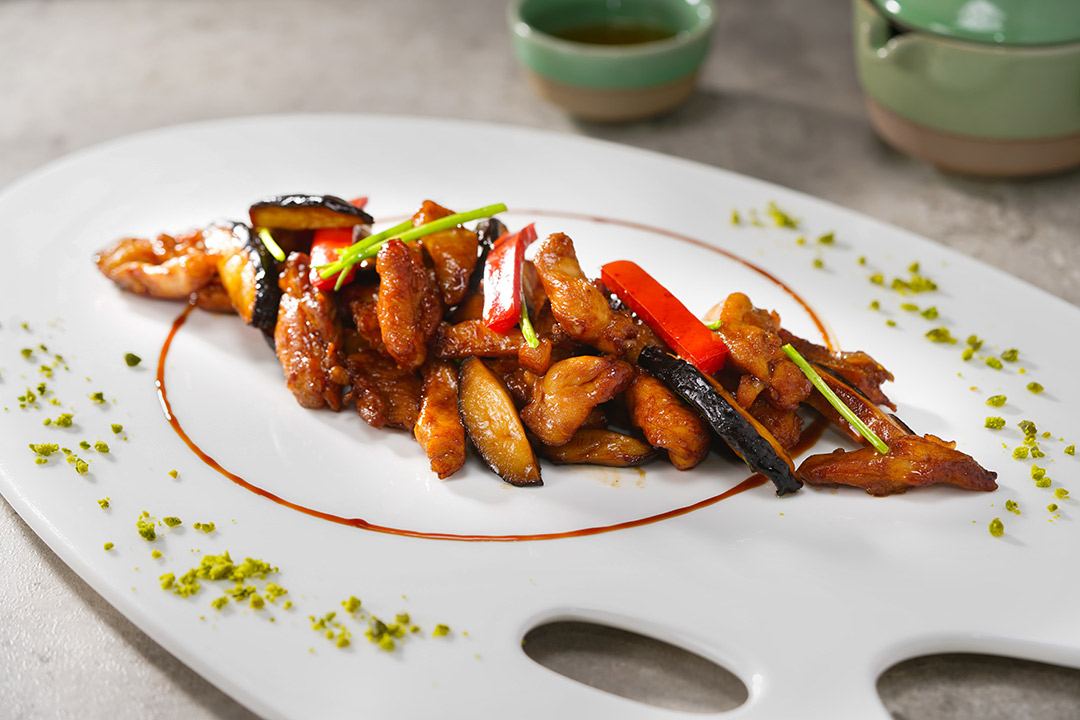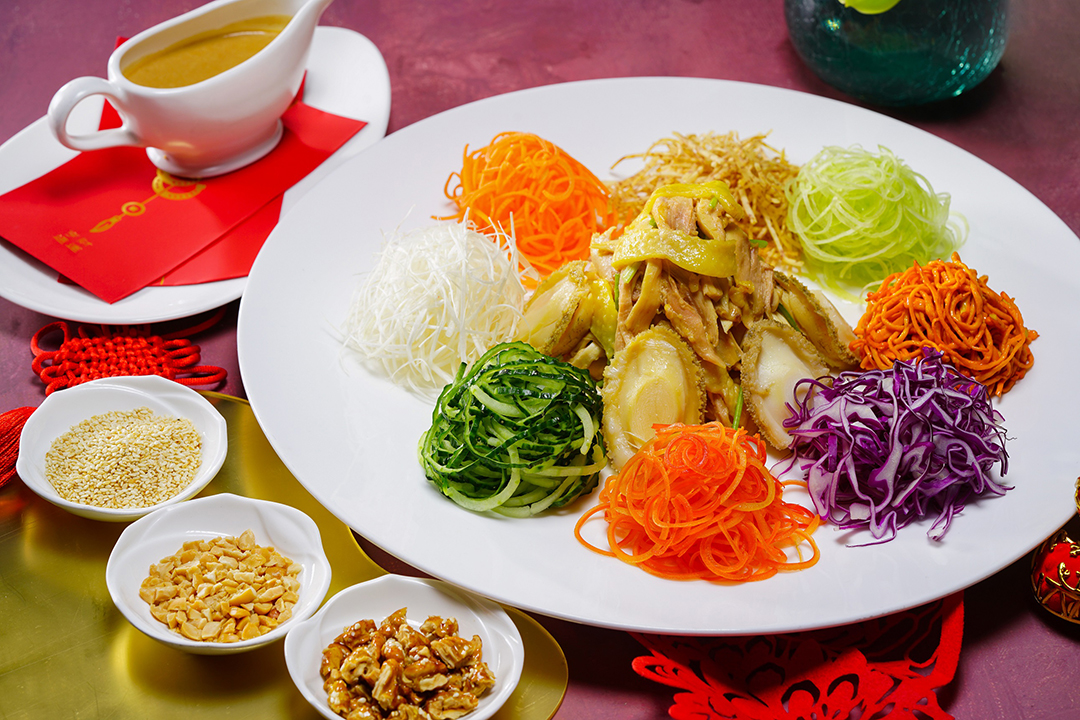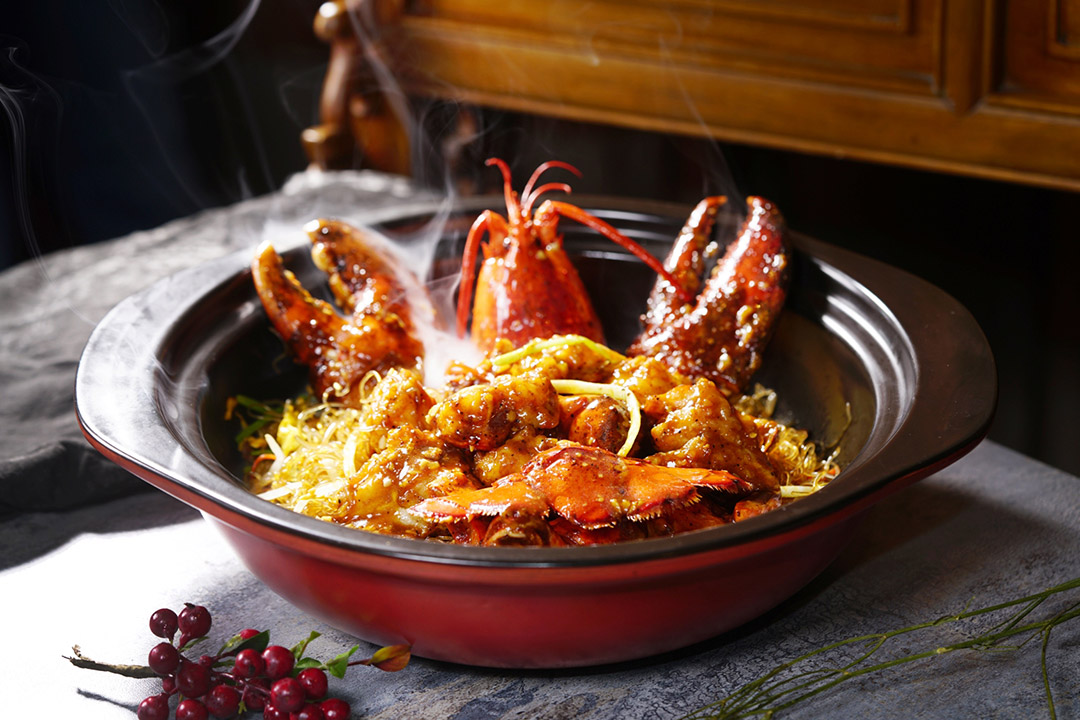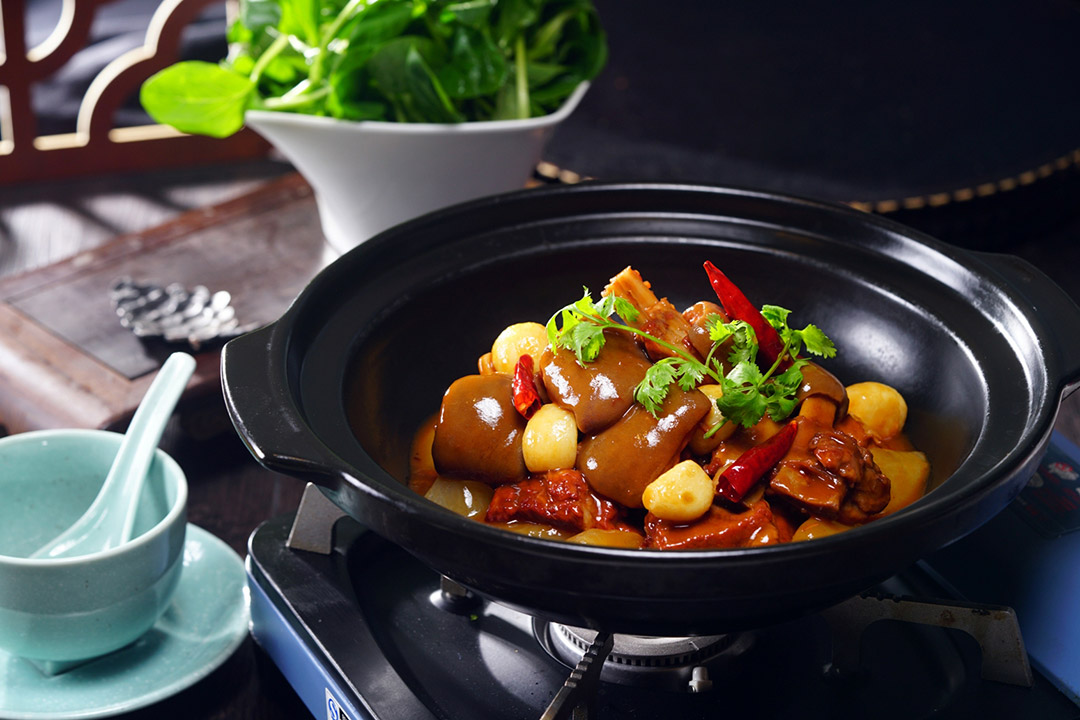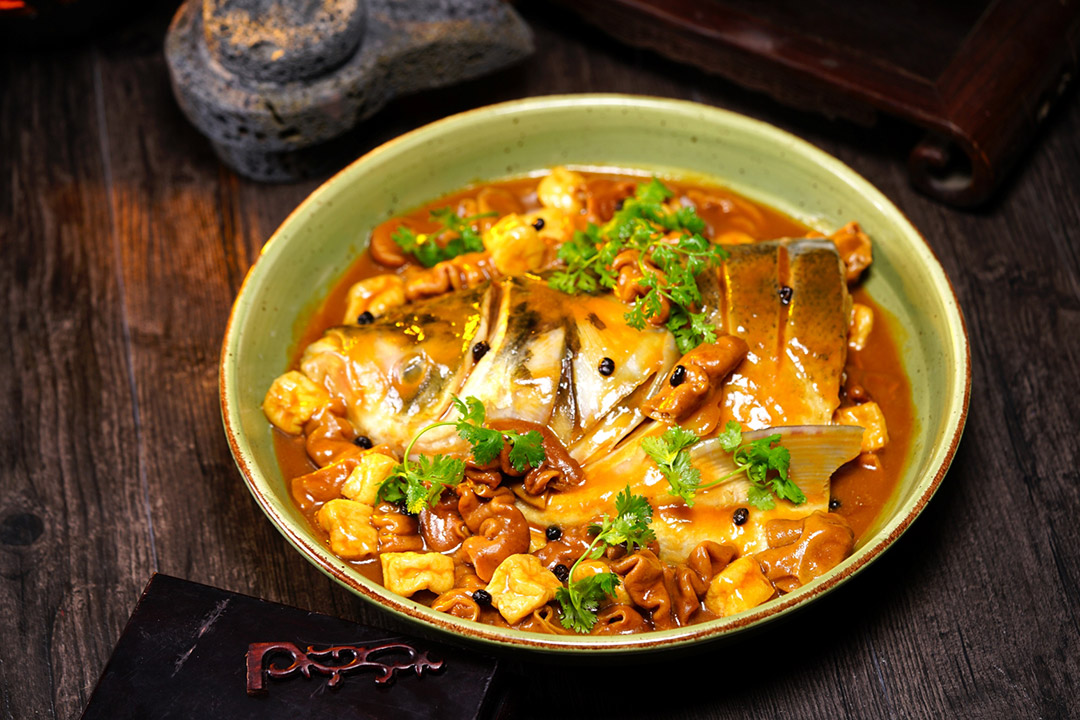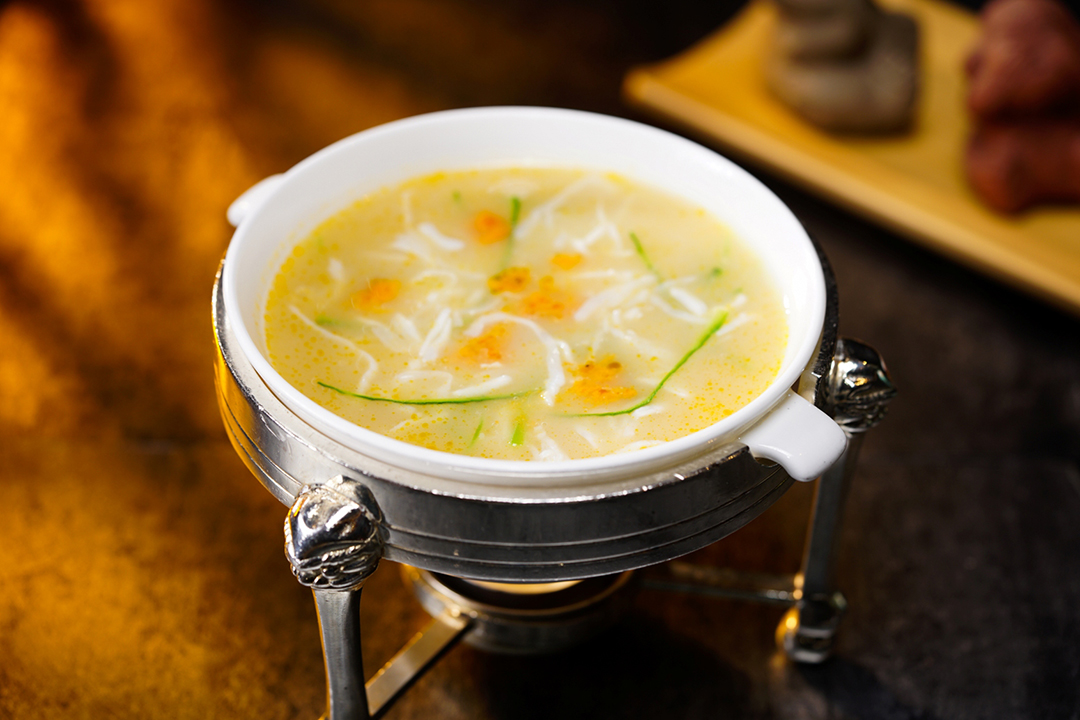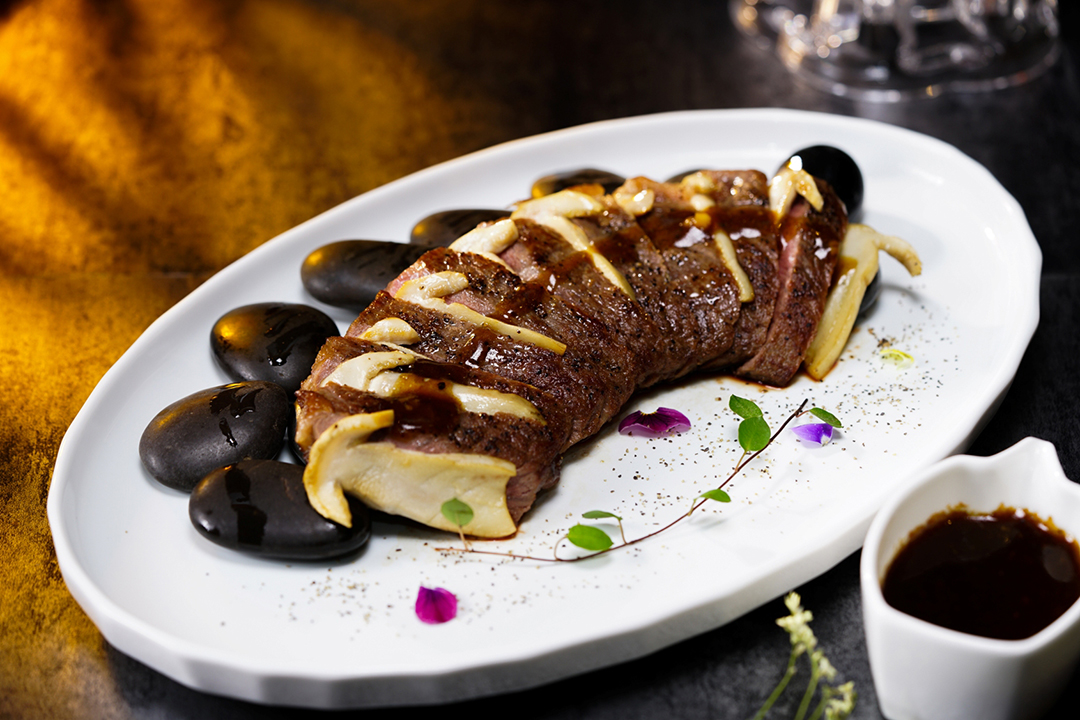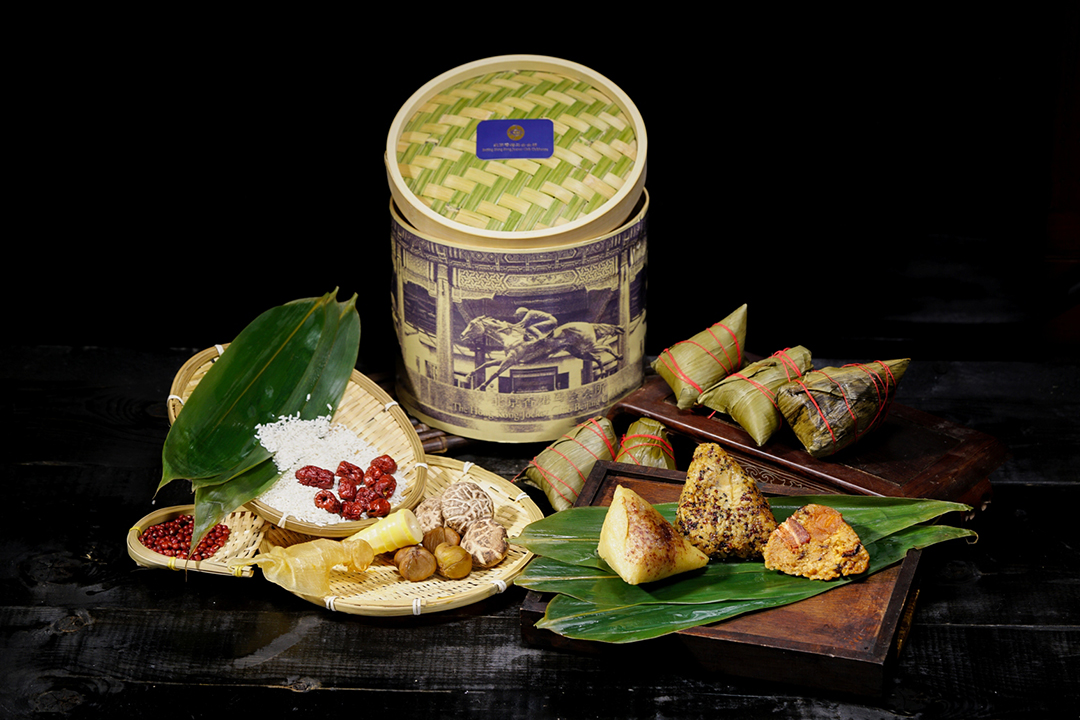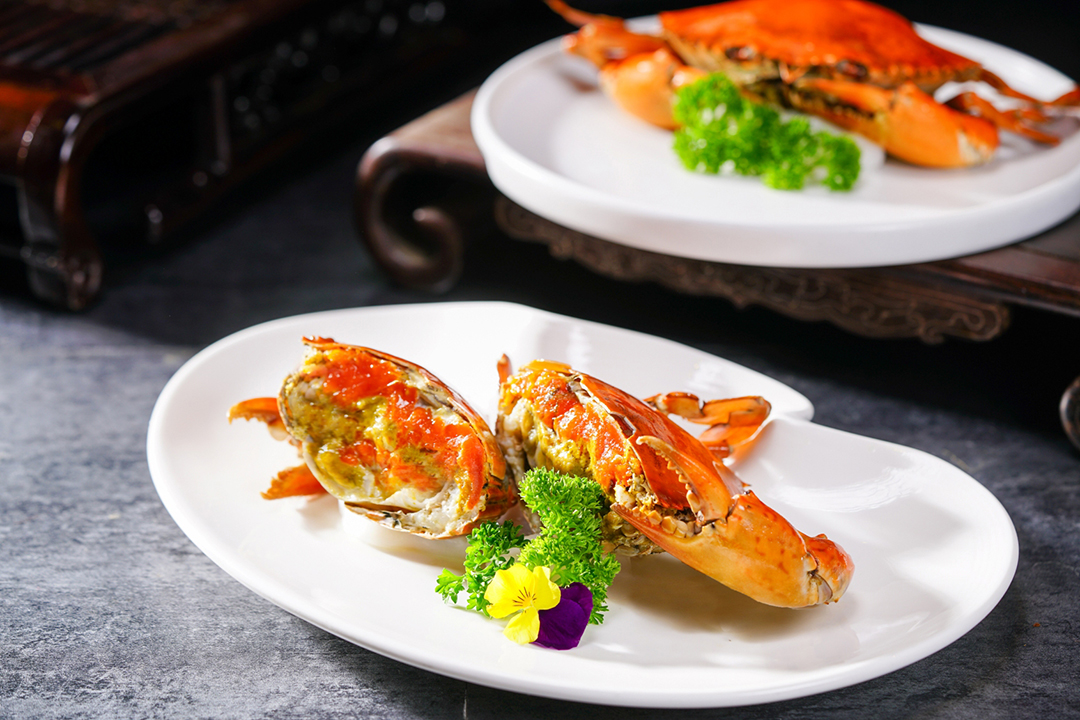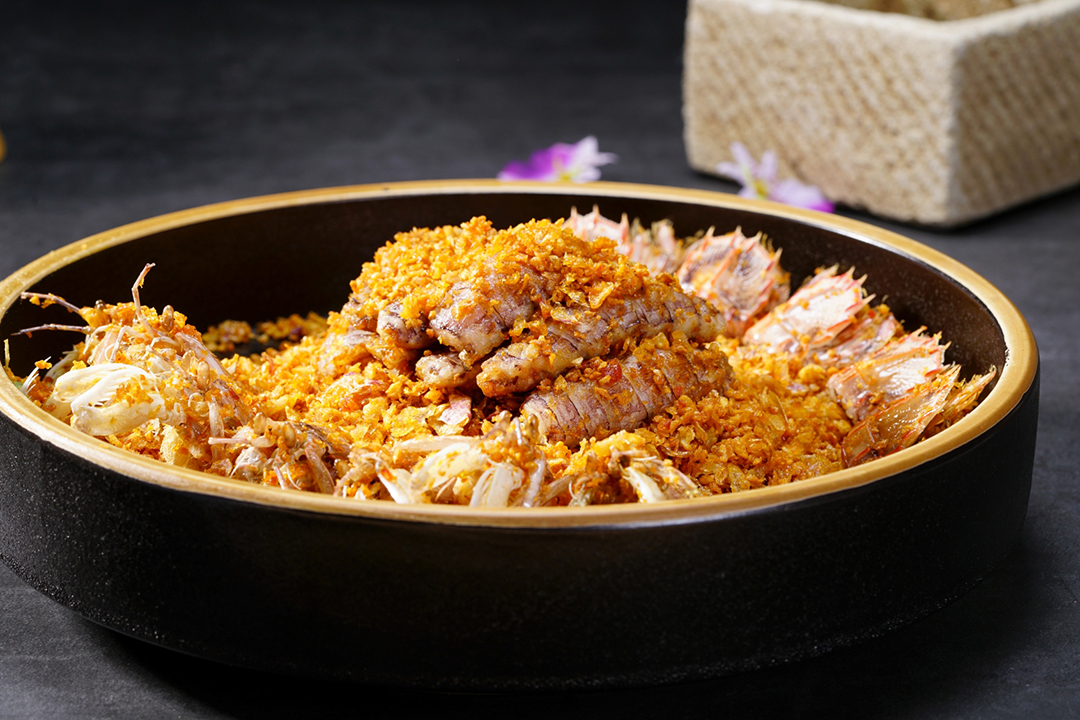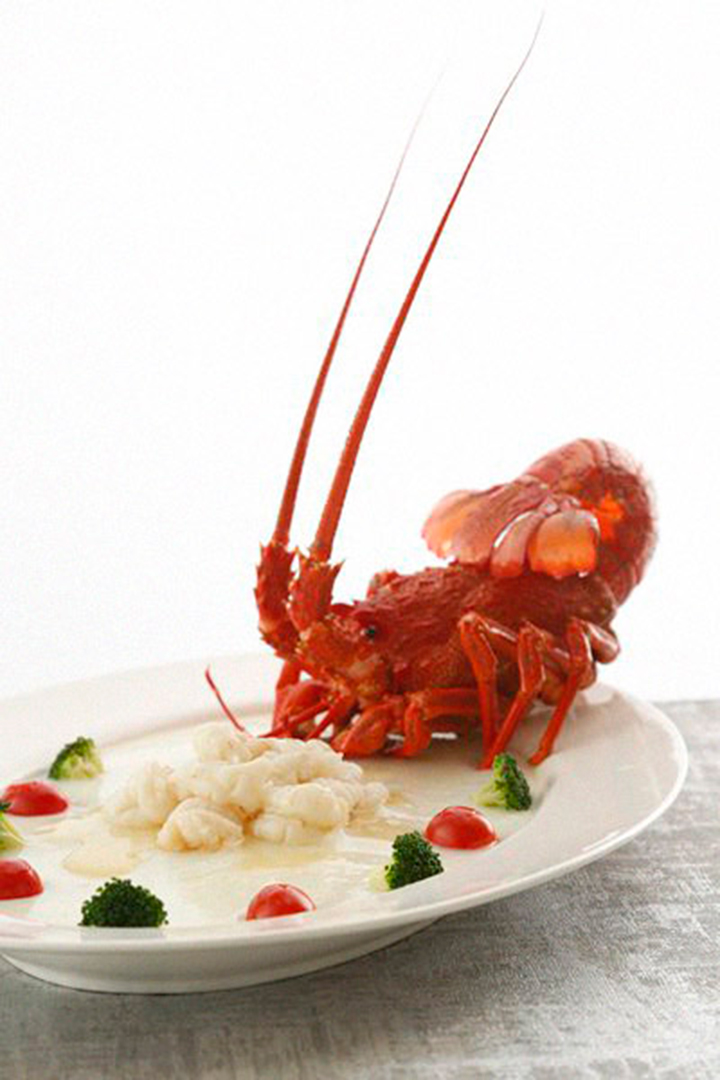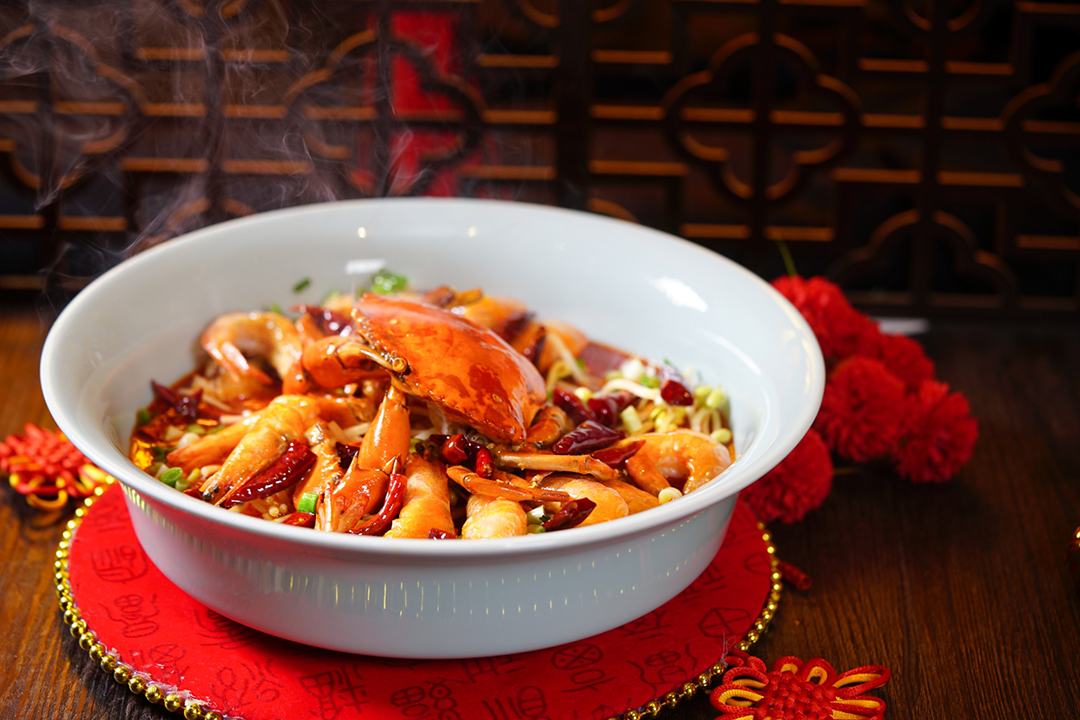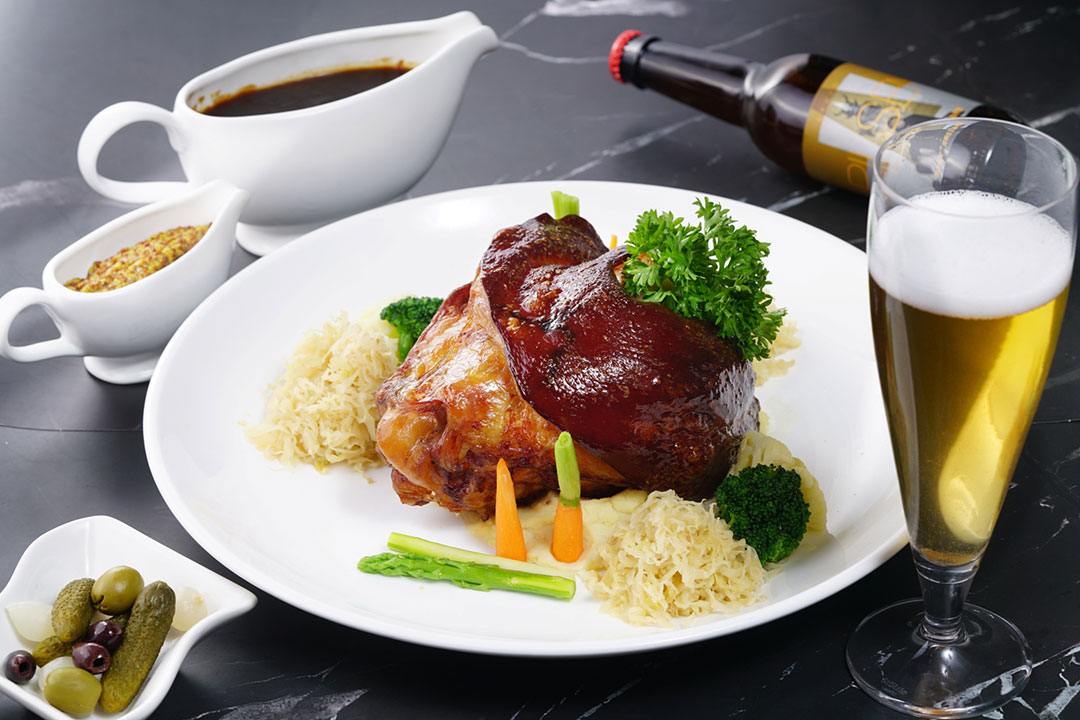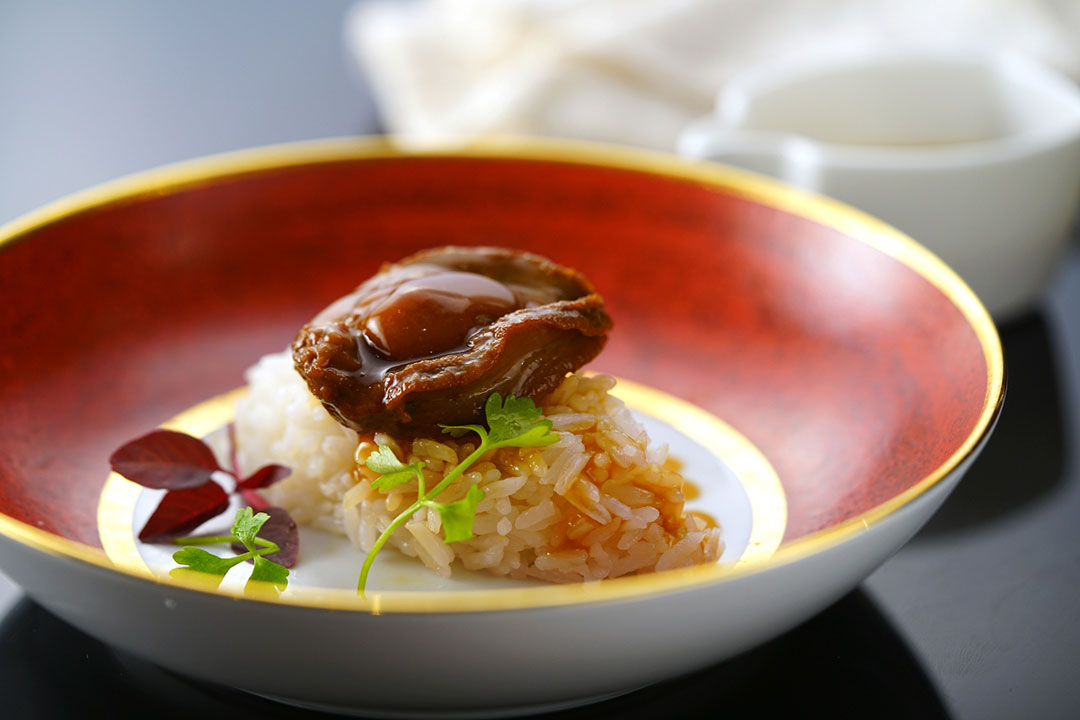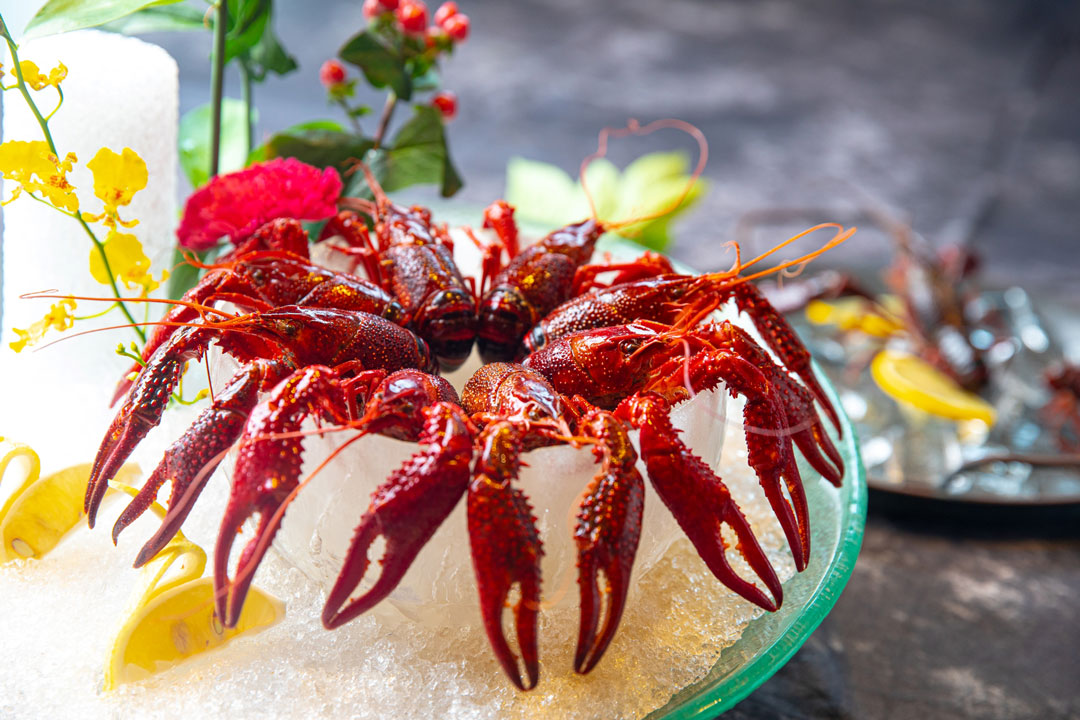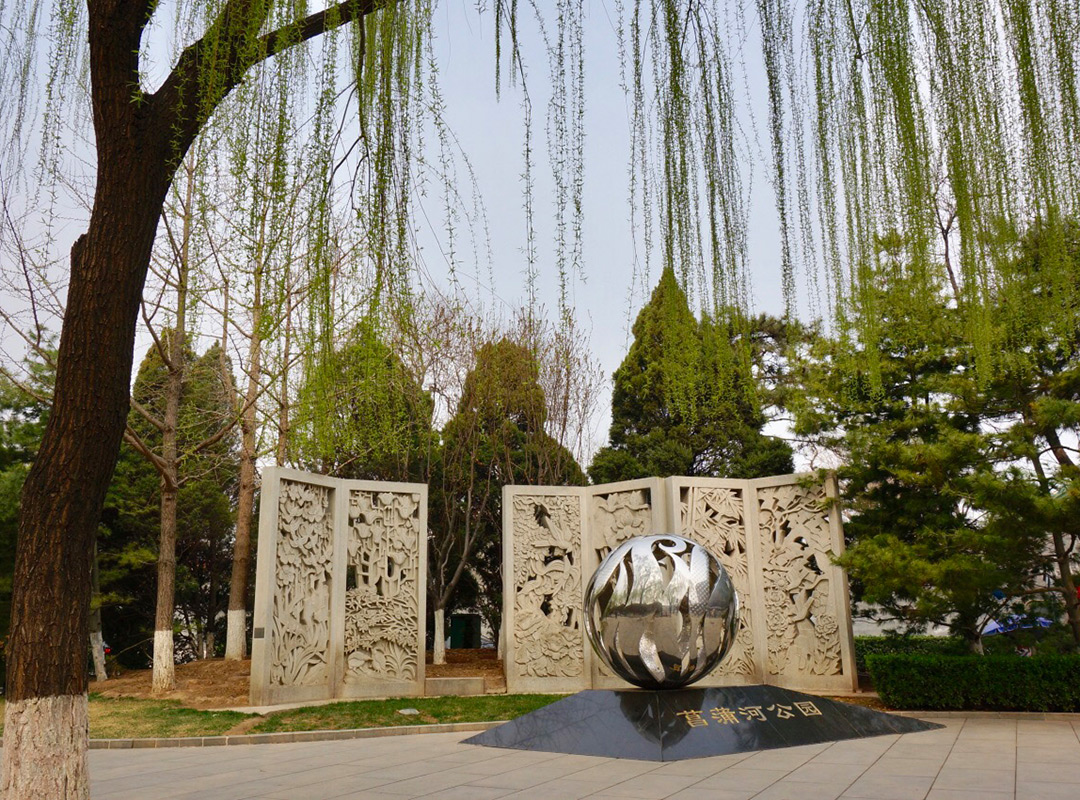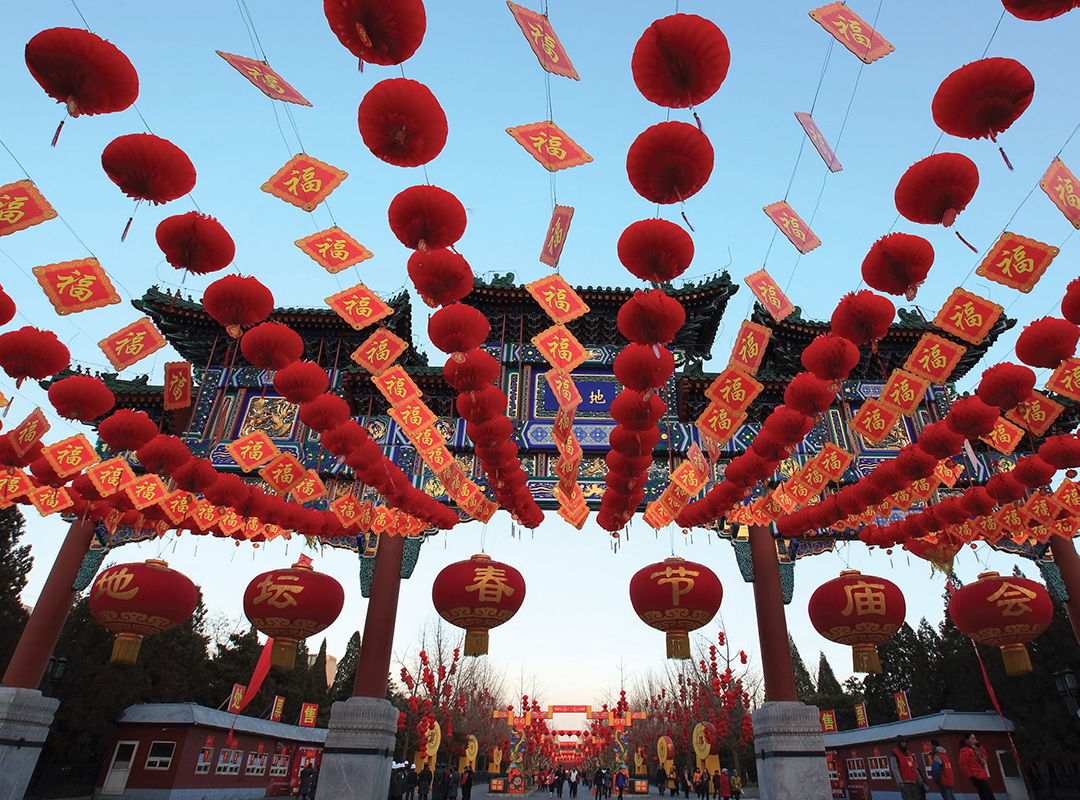Monthly Features
Greenery Abounds in Suburban Beijing
“Mountains and villages exhibit a shade of deepest green where streams flow and willows blossom.” You might not be aware that Beijing and its surrounding suburbs, whilst essentially located on a plain, are dotted with many mountains, valleys, streams and waterfalls in an invigorating landscape. Venturing into the suburbs in the midst of summer, you will be soothed by nature in its many senses: flowers bursting with colours, birds singing, insects humming, and a sense of calm amidst the wild nature. The following introduction will serve to familiarise you with the beauty of the Beijing suburbs.
Located 13 kilometres north of Miyun District, the Miyun Reservoir sits right in the midst of the Yanshan Mountains. The reservoir was completed in September 1960, and occupies a surface area of 180 square kilometres with a perimeter of roads and pathways measuring 200 kilometres. Counted as the largest artificial lake in Asia, its storage capacity tops four billion cubic metres; and with an average water depth of 30 metres, it provides Beijing with its largest and only source of fresh drinking water. There is also a 110-kilometre-long highway running through the vicinity of the reservoir. The average summer temperature is 3°C lower than in urban areas, making it both a popular scenic spot and a cooling summer retreat.
The magnetic attraction of Miyun Reservoir lies in its mesmerising scenery where mountains and water meet, and this elevates its status as one of the most popular scenic spots in the Jingdong area. The majesty of the water dam is adorned with clusters of houses that look like fairy-tale palaces hidden amongst lush greenery. Northwest of Baihe Dam arises a 900-metre mountain peak with five beacon towers, a relic of ancient war times. One of Miyun Reservoir's culinary specialties is the "Dongzhuyu" (freshly caught wild fish broiled in reservoir water), whilst also popular are pastries and other farm dishes, such as broiled meat with gourd stick; tofu vermicelli stewed with dried cabbage; fried brine tofu, etc. Miyun Reservoir is the summer rendezvous that is perfect for a Beijing suburbs weekend getaway tour.
Although Zhaitang Reservoir has not been as well developed as Miyun Reservoir as a tourist attraction, its superior natural scenery is worth a visit for fans of more secluded paths. Located within the valley of Xizhaitang Village, Zhaitang Reservoir is the main ditch of the Qingshui River in Mentougou District. The source of the reservoir is the Qingshui River, with Huangtagou, Xiaolongmengou, Lingshan, Longmenjian, and Dharmagou as its tributaries. Construction of Zhaitang Reservoir began in 1970, with completion on 17 September 1974. The catchment area is 354 square kilometres with a built-up main dam, water pipeline and spillway.
Zhaitang Reservoir is the largest reservoir in Mentougou District, and it features the most picturesque scenery. The Lingshan, Baihua Mountain, Longmenjian and other scenic spots around the reservoir are only 30 kilometres away, and the famous ancient village of Cuandixia is also nearby. The 109 National Highway passes through its northern shore, providing convenient drive-in access. In recent years, flocks of white swan have frequented its shores, whereas wild ducks and other water birds also nest and proliferate here, bringing vitality to the reservoir ecosystem. Although tourism at Zhaitang Reservoir has not been highly developed, more than 5,000 people come to fish, camp or swim here each year. Upon further development, Zhaitang Reservoir will become an up-and-coming tourist town.
Gubei Water Town is a unique resort town located in Gubeikou Town, Miyun District at the foot of the steepest beauty of the Ximatai Great Wall and twin reservoirs. It is a rare gem that combines a scenic resort with landscape town characteristics. Due to its proximity to the Hebei border, transportation is very convenient. It is about an hour-and-a-half drive from Capital International Airport as well as downtown Beijing, and about 45 minutes from Miyun District and Chengde City. The town is built up with 430,000 square metres of exquisite early 20th century mountain quadrangle-style mansions occupying nine square kilometres of land. You can integrate sightseeing, a leisure vacation, business exhibitions, creative culture and more all into an unforgettable excursion.
Modelled after the vacation experience of Wuzhen, Gubei Water Town has done a great job in terms of tourism development. Major scenic areas and tourist attractions include Ximatai Great Wall, Yuantong Tower, Sima Xiaoyao, Yongshun Dyefang, Yinghua College, Yang Wudi Temple, Zhenyuan Dart, The Eight Banners Hall, the open-air Great Wall Theater, Moon Elder Temple, Tongwan Hall and Wangjinglou Water Dance Show. With fabulous night views, Gubei Water Town is fast becoming a new landmark for Beijing suburban night tours.
Heilongtan is located in a canyon with a total length of four kilometres and a water drop of 220 metres. Located 100 kilometres from Beijing, it features a staggering set of three waterfalls and 18 famous ponds, such as Chunhua, Qiuyue, Pingsha, Luoyan, Qu, Die, Shen, and Xuantan. Heilongtan meanders along this deep roaring canyon named Zilongyu. People would describe Heilongtan as a new, adventurous and even dangerous experience. There are so many thunderous waterfalls along this eight-kilometre-long deep valley that it is truly unparalleled in the suburbs of Beijing. Along the way, there is always a sense of excitement and nothing is ever the same twice. Visitors will keep marching on in awe, from beginning to end.
Along the journey is the Tongtian Waterfall which is steep, cutting 50 metres vertically through the rocky cliff like a knife. The roaring water column seems to descend from the sky, causing smoke to rise up, filling the valley with a cool airstream. Luoyan Lake underneath is formed by the impact of Tongtian Waterfall. The lake surface spans more than 100 square metres with a depth of three to four metres. The surrounding terrain is relatively open and surrounded by a ring of mountains; streams paved with pebbles, and fields of lush green blossoming wildflowers. During early spring and late autumn, wild geese will come down to hunt for food and fresh water, and that is the reason why the lake is known as Luoyan Lake. Nature’s meticulous workmanship carved this magnificent scenery out of the gorge, presenting itself as both amazing and mysterious. Another waterfall is the Longtan with water gushing down from on high to form swirling eddies underneath. Traversing the Longtan bridge, you can fully experience the view and thrills of the dangerous waters underneath. Visitors who wish to pursue this edgy feeling are welcome to "take the risk" and embark on this heroic crossing.
Beijing Huanghuacheng Water Great Wall Tourist Area is a national AAAA-level scenic spot located in Jiuduhe Town, Huairou District. It is famed for three unique sections of its Great Wall, and it has the only Great Wall section that is immersed in water. This scenic spot is 70 kilometres away from downtown Beijing and 35 kilometres from Huairou City. This unique tourist showpiece integrates mountain and water scenery, the Great Wall and ancient vegetation; having earned its reputation as a canvas interwoven with "Northern exotics, Jiangnan aesthetics and Great Wall magnificence". The most fascinating part of the Great Wall of Water is the “Three Breathtaking Scenes of Wonders". The first breathtaking scene was the Great Wall section built during the Ming Yongle period which hovers over the ridge that surrounds Haoming Lake. The second breath-taker starts where the lake water naturally cuts off the Great Wall, forming a fascinating landscape which depicts a great water dance between the Great Wall and lake water. The breathtaking third scene is the chestnut gardens of the Ming Dynasty adorned with intertwining ancient trees forming different shapes. Amazingly, it looks as if the dragon is playing with beads under a crown that covers the sky. You can eventually reach Heilongtan by trekking through ancient roads, crossing a wooden bridge, and wading in a creek with rocks of all shapes. Your unforgettable journey will also carry snapshots of natural landscapes, such as: Longwei Cave, Zicuifeng Mountain, Zuinv Mountain, Shilang Valley, Lover Peak and Sanzhu Liantan. It’s time to consider putting Huanghaucheng Water Great Wall into your next outdoor excursion itinerary!
Shentangyu Natural Scenic Area is located to the north of Shentangyu Village, Fangezhuang Township, North Huairou City. It is 60 kilometres away from Beijing, with Yanqi Lake in the east, Hongluo Temple in the south, and Mutianyu Great Wall in the west. The blueprint of this scenic spot consists of two mountains sandwiching a ditch 10 kilometres long. Historically, Shentangyu was the fortress of past dynastic capitals, with the ruins of Tunbing Castle built during the Ming Wanli period still intact, standing the test of time on a rollercoaster ride. At the bottom of the valley flows the crystal clear Yanqi River, decorated on both sides by erratic landscapes and picturesque mountain ranges. You can take a summer dip whilst admiring mini waterfalls splashing upon irregularly-shaped bare rocks.
Continuous flow of mountain springs are the source of the clear-flowing waters of the Yanqi River that runs through the whole of Shentangyu. Its water quality is purer than that of Class Two drinking water. In fact, springs and streams of clear drinking water are a perennial in this natural abode. The naturally-formed Longtan Lake has four metres of water so clear you can spot swarms of fish swimming freely. Other vast bodies of pond waters such as Mandarin Duck Pond and Crocodile Pool are water-sport favourites.



